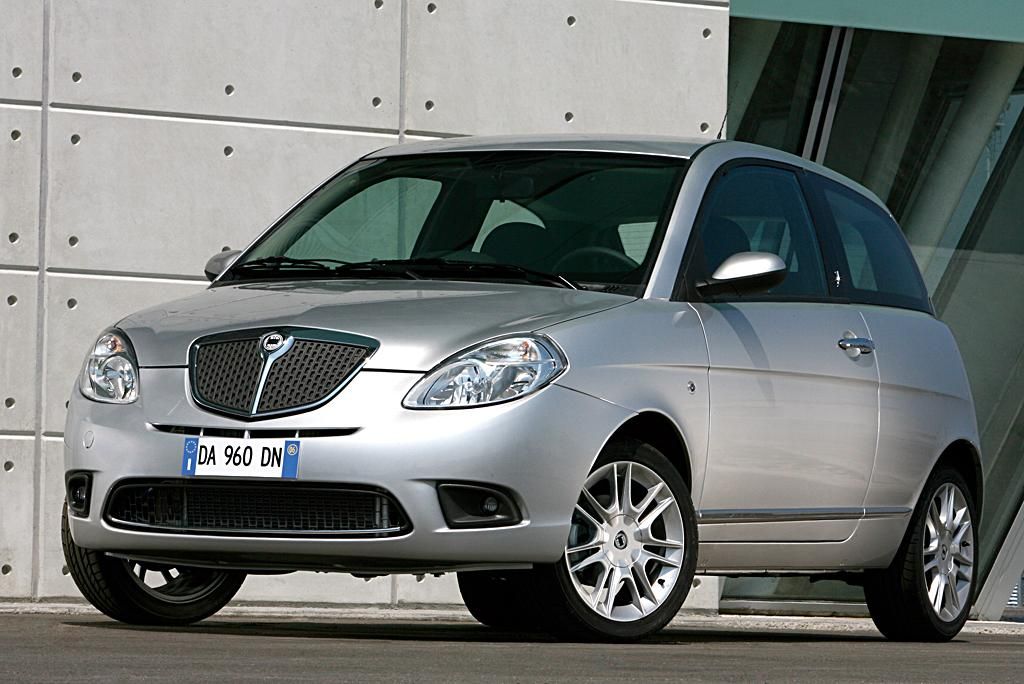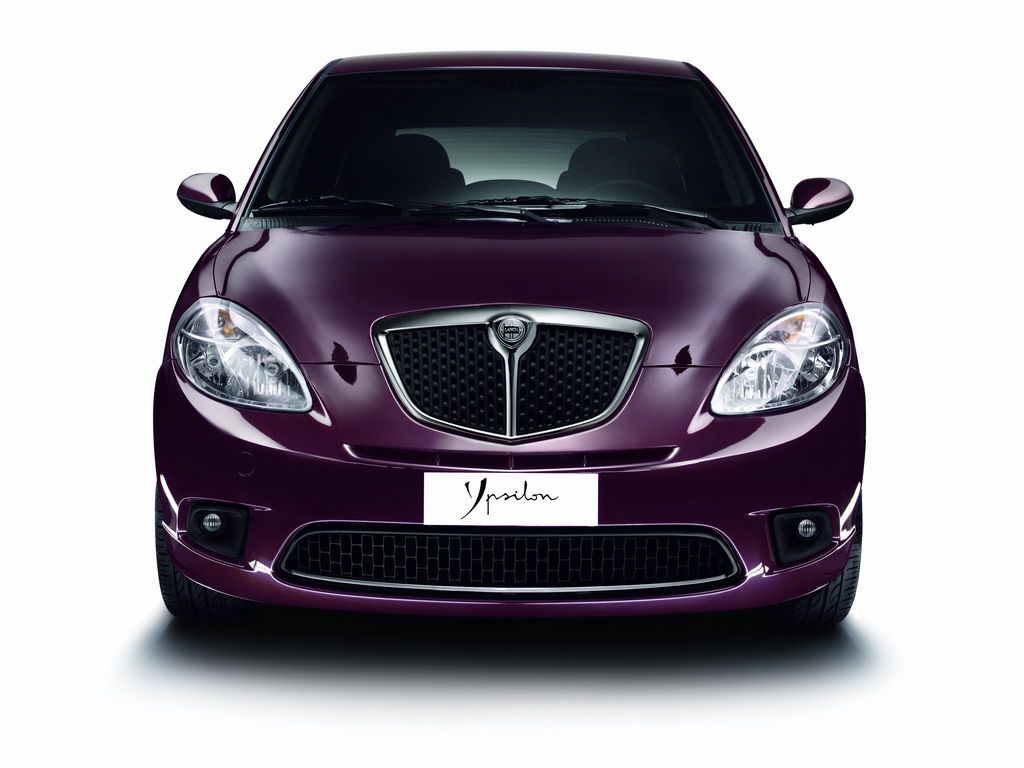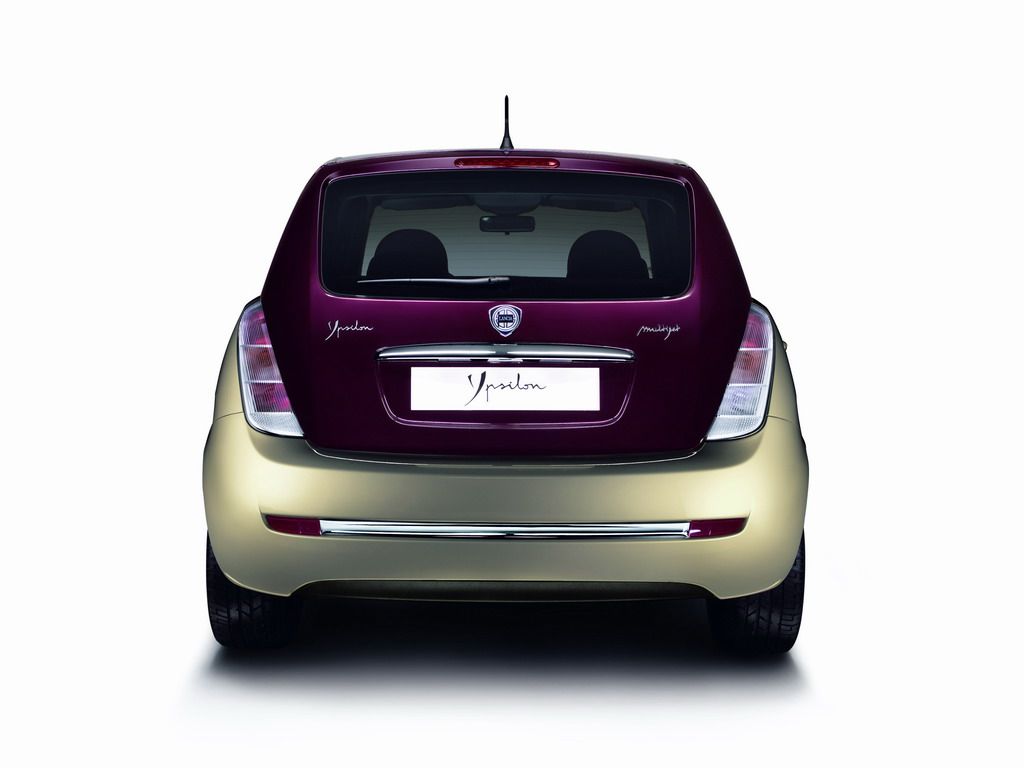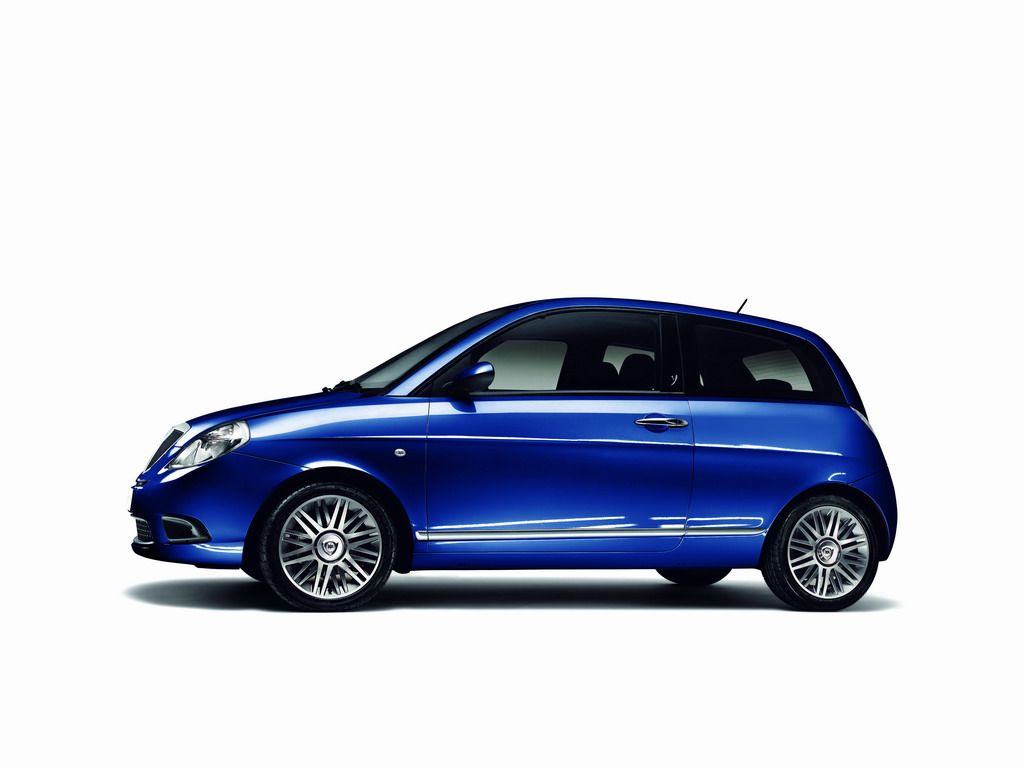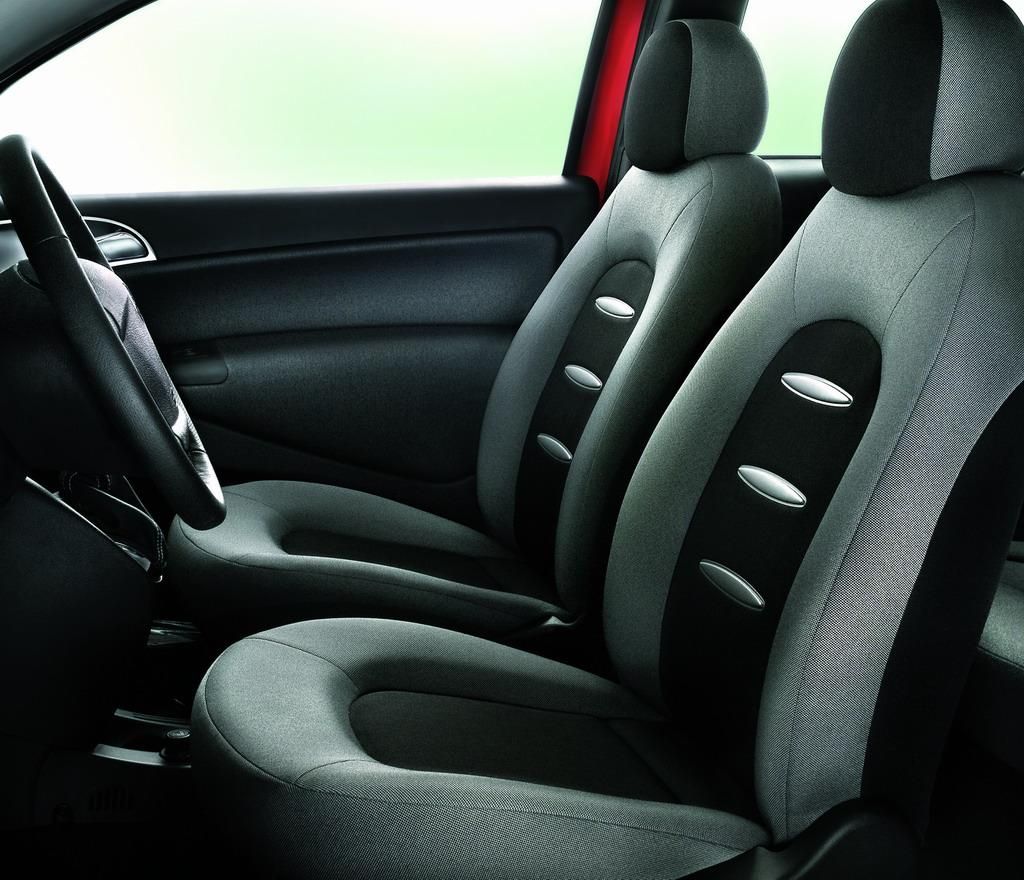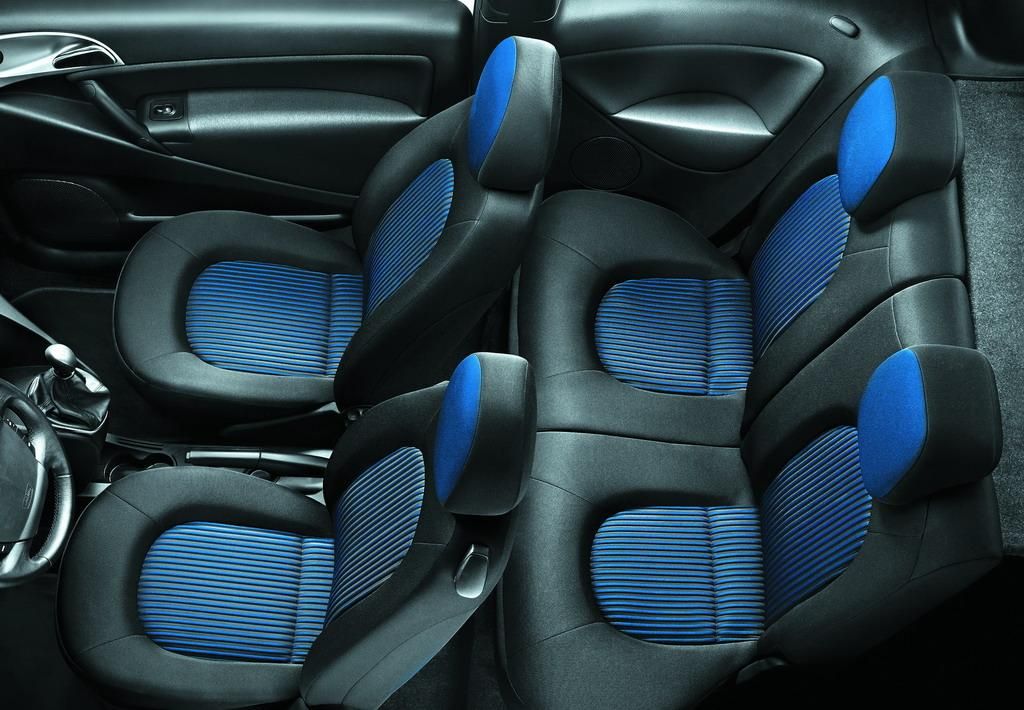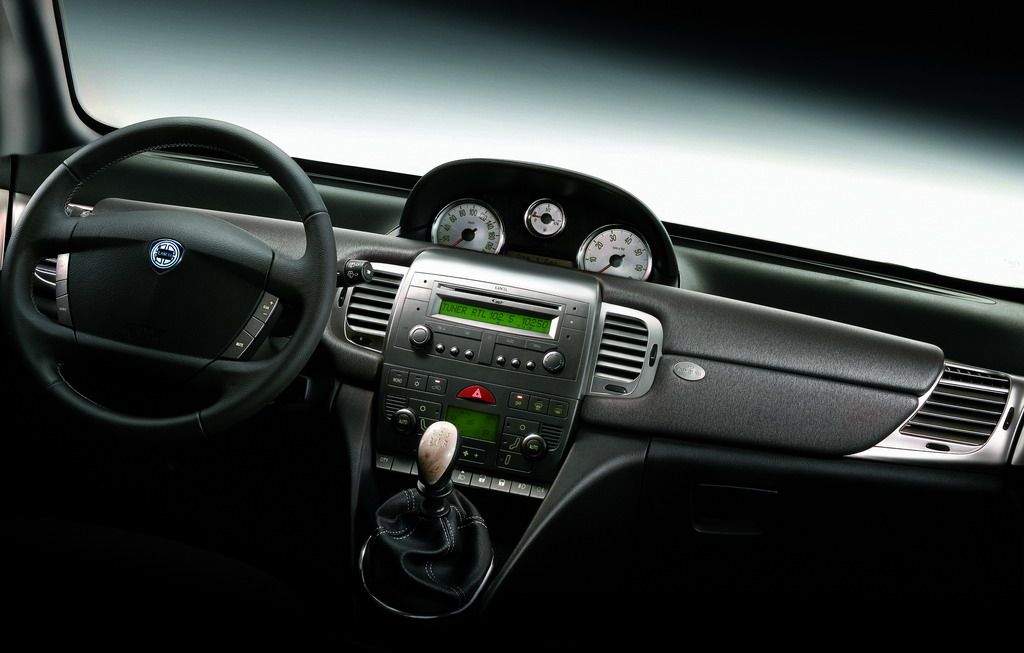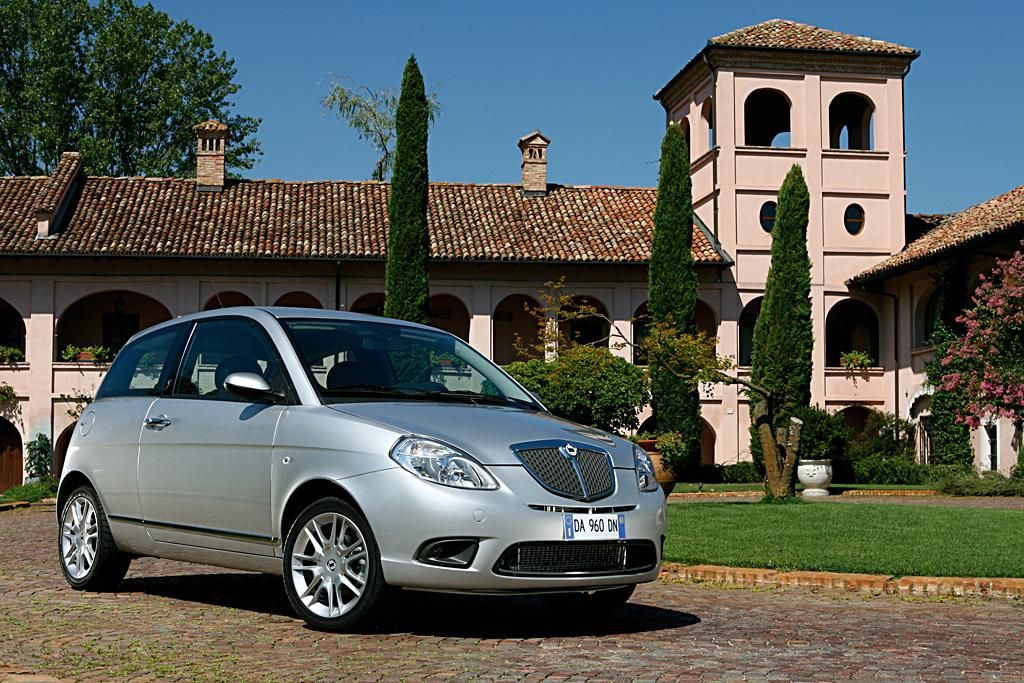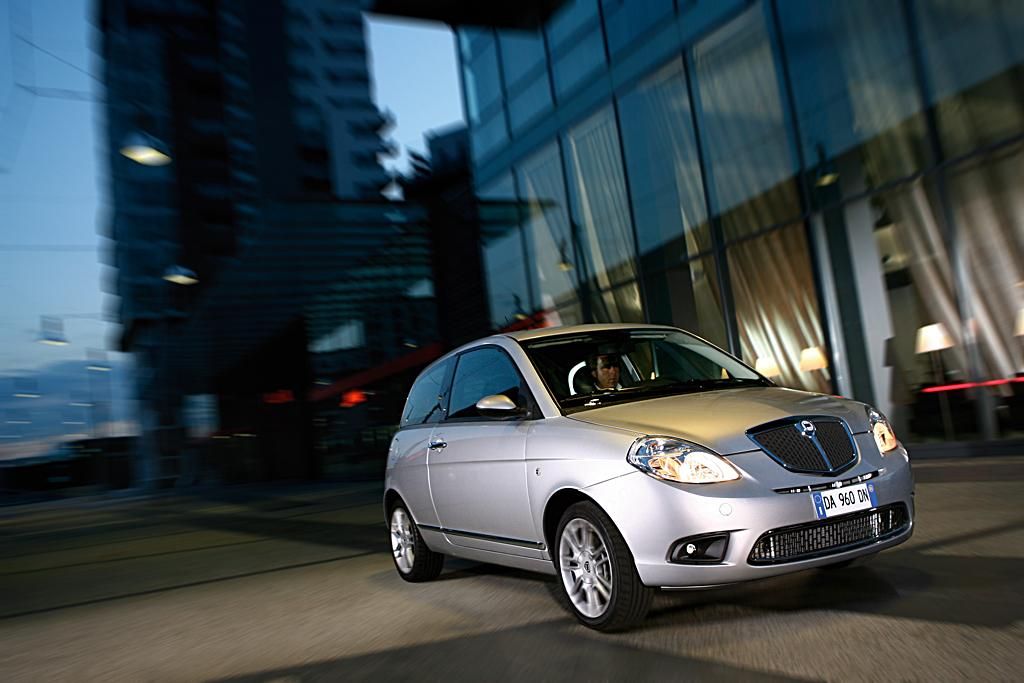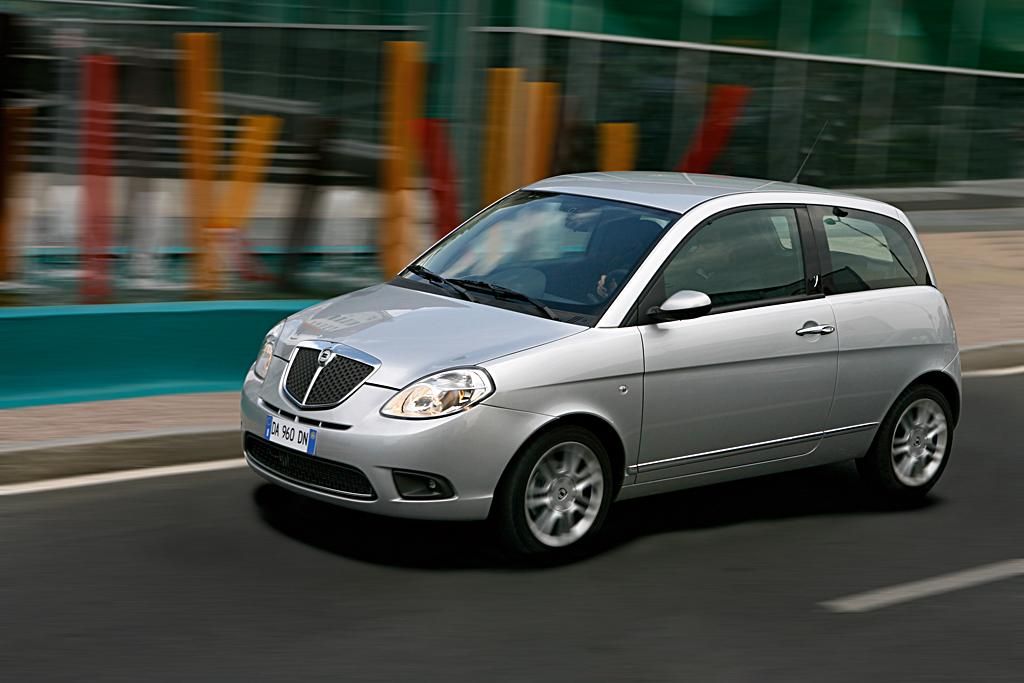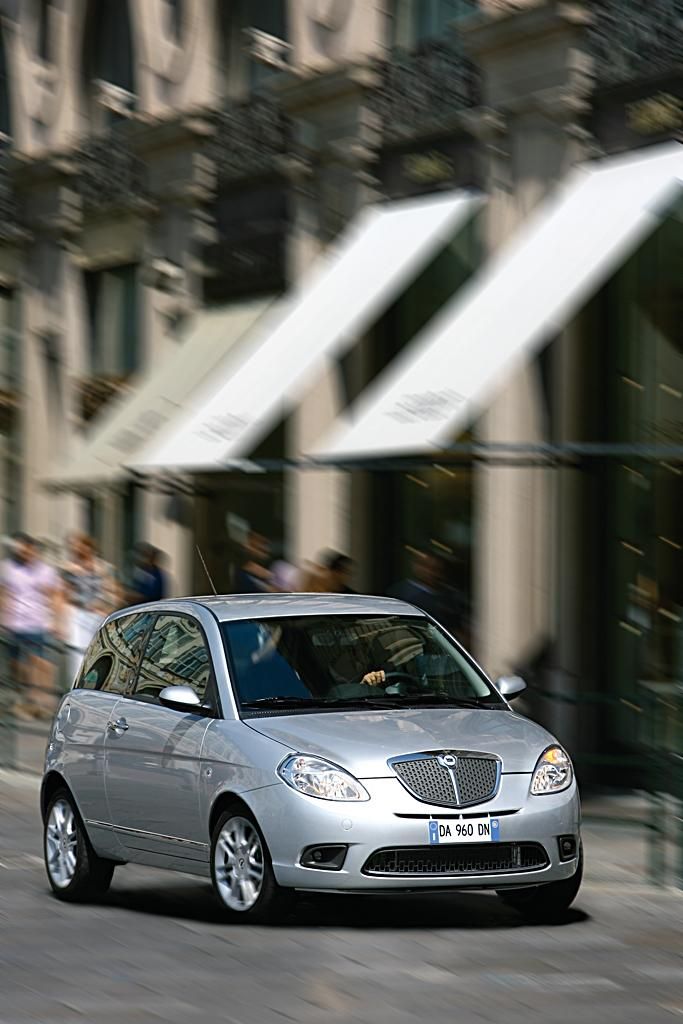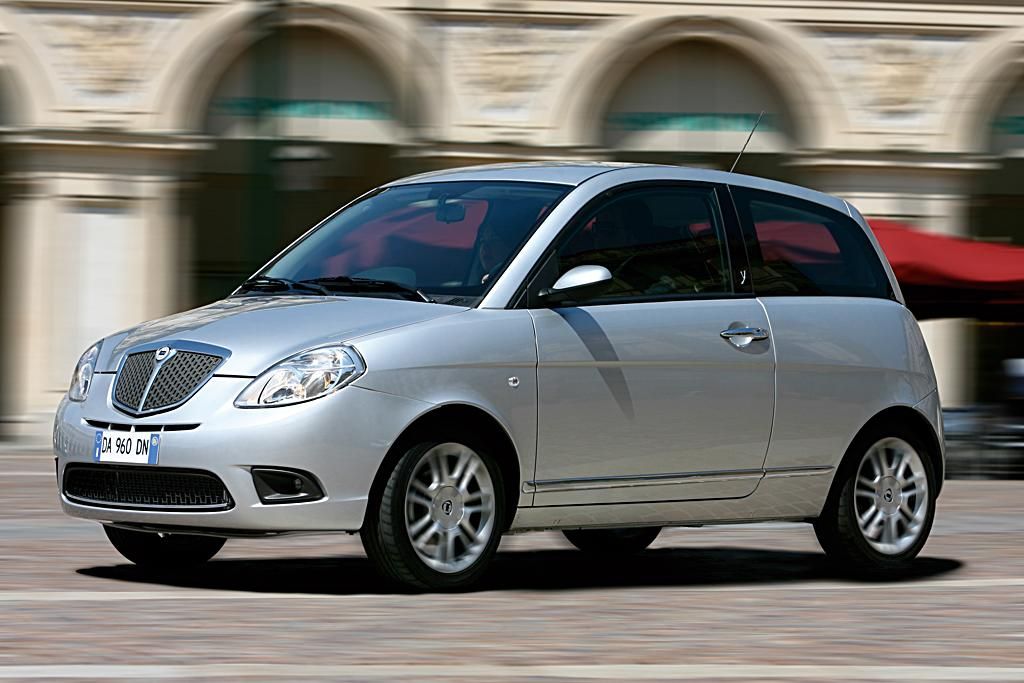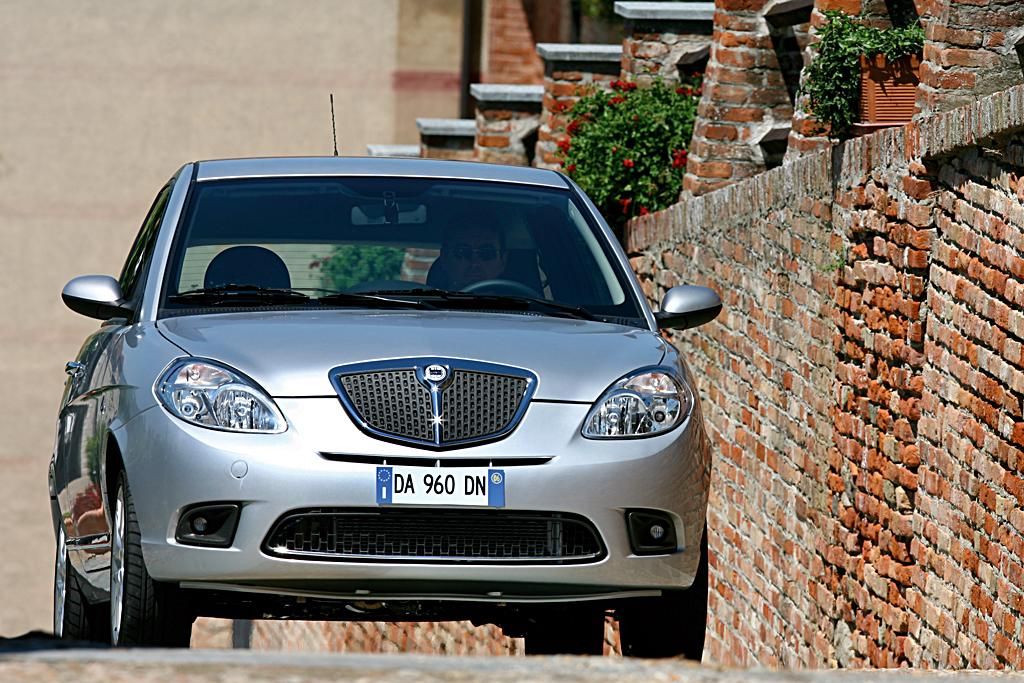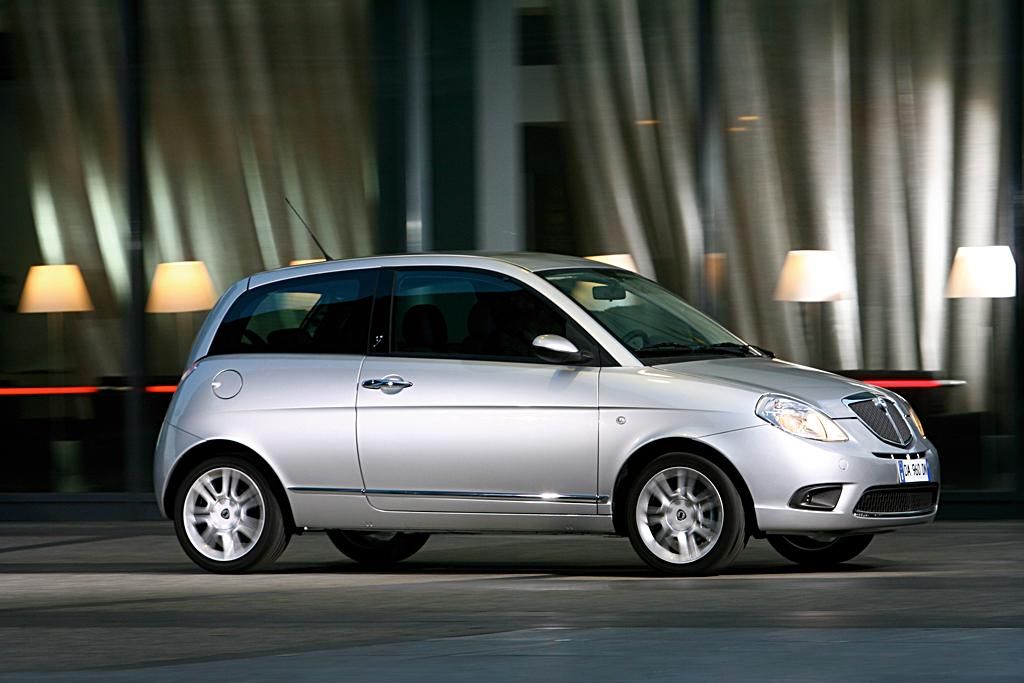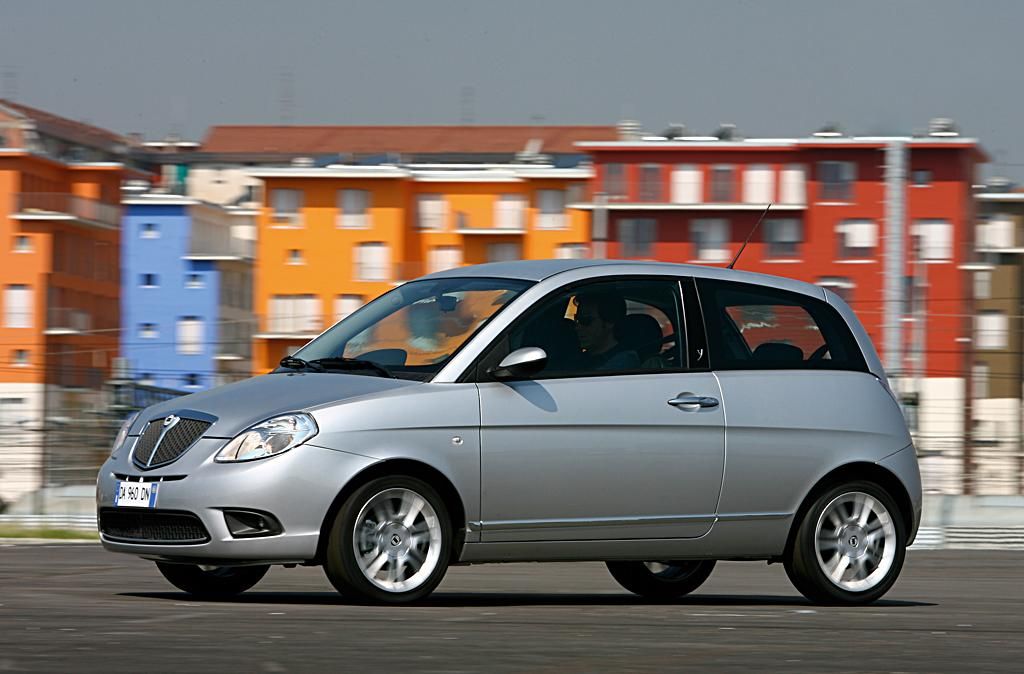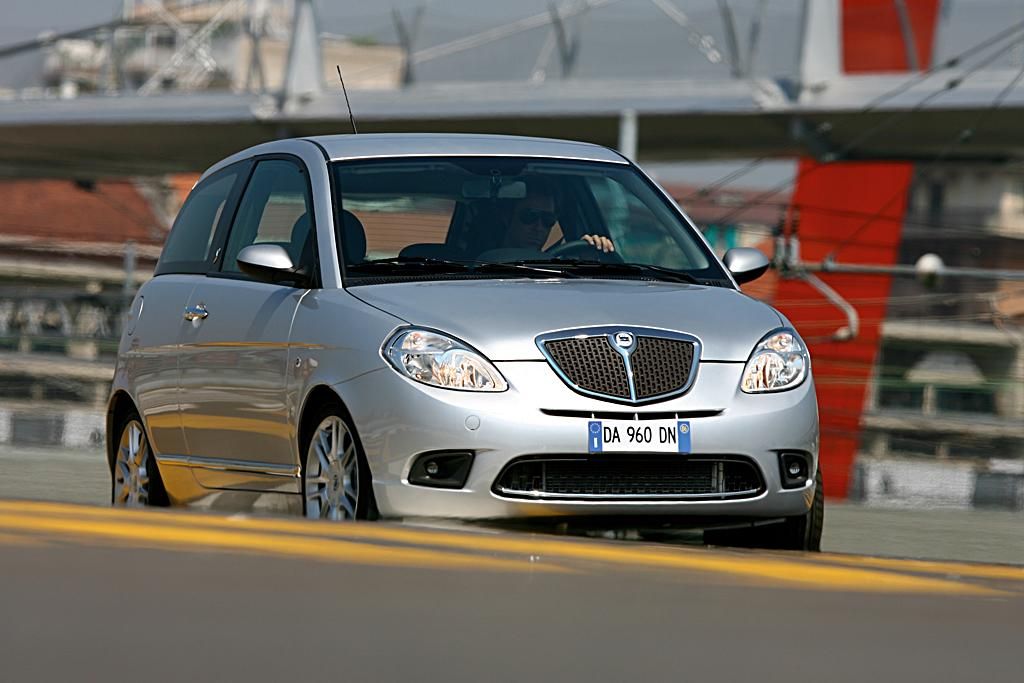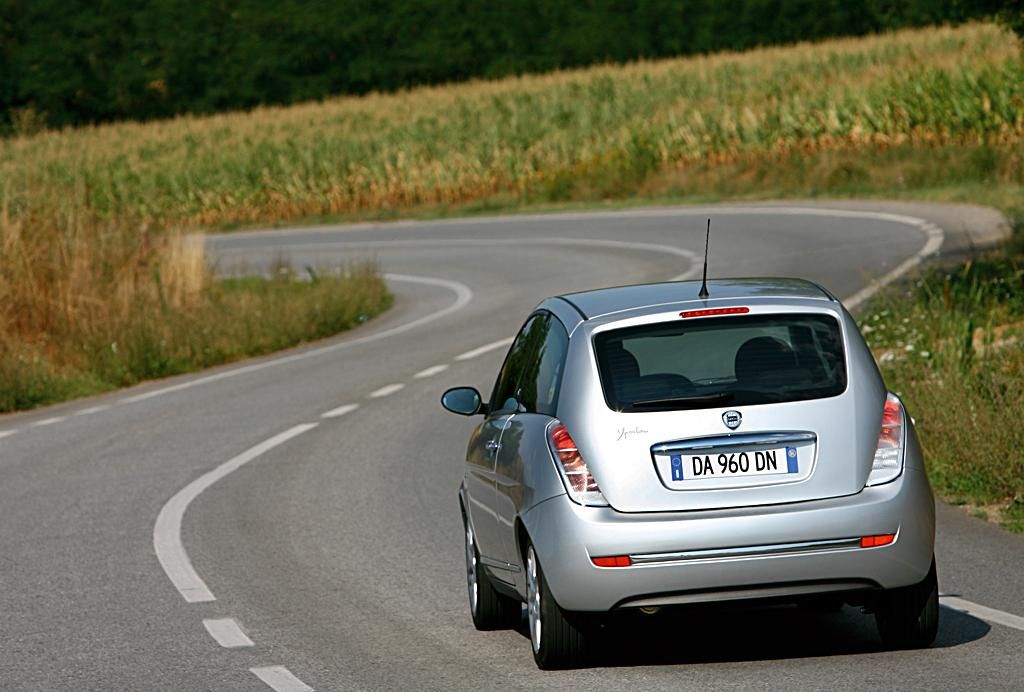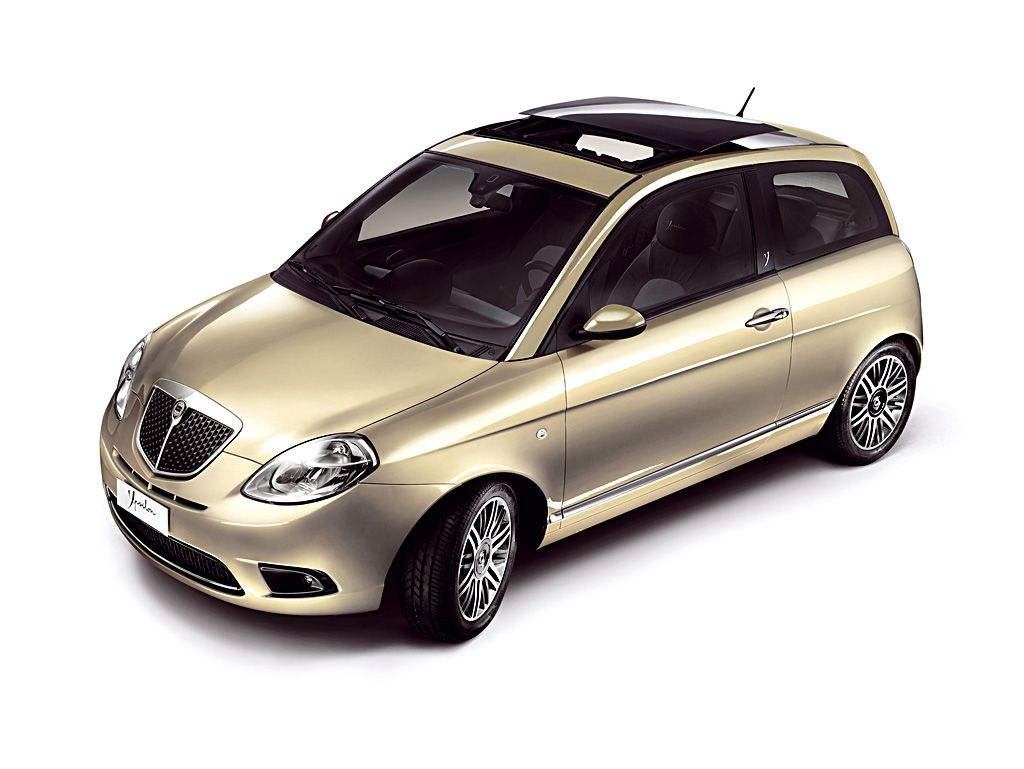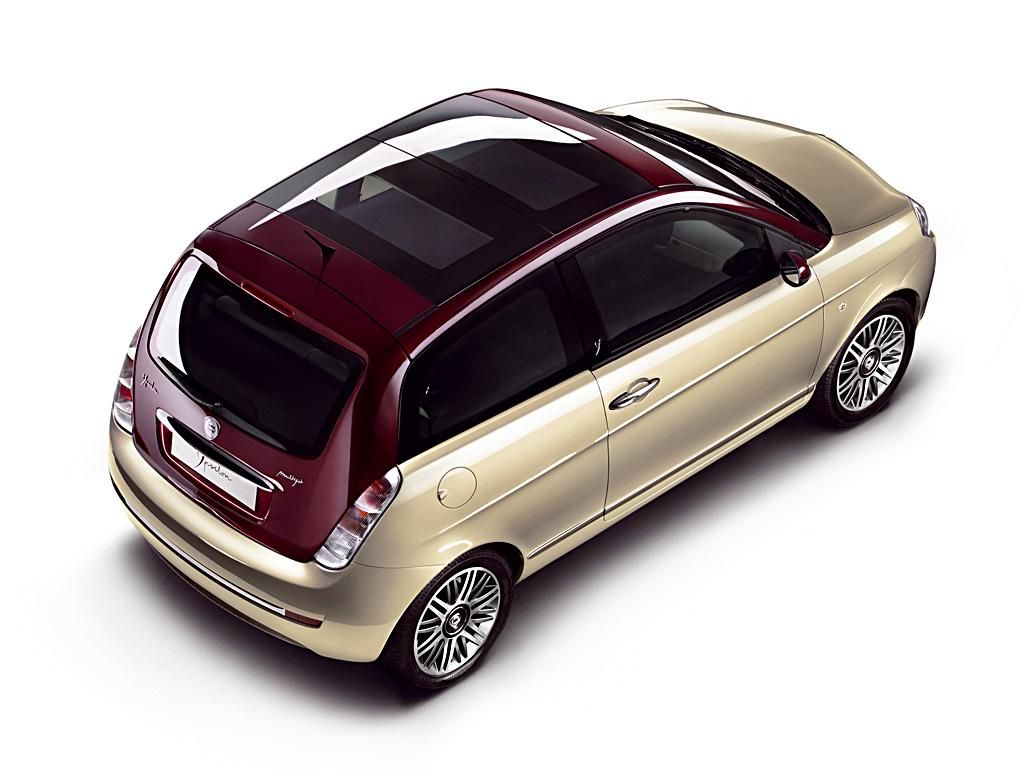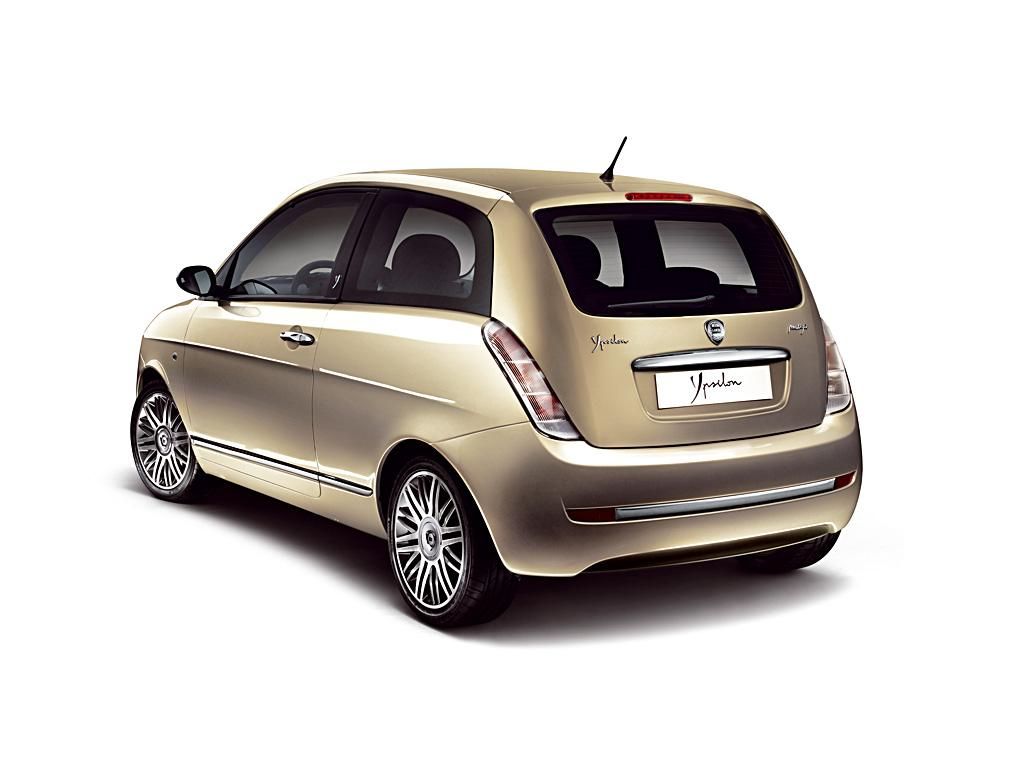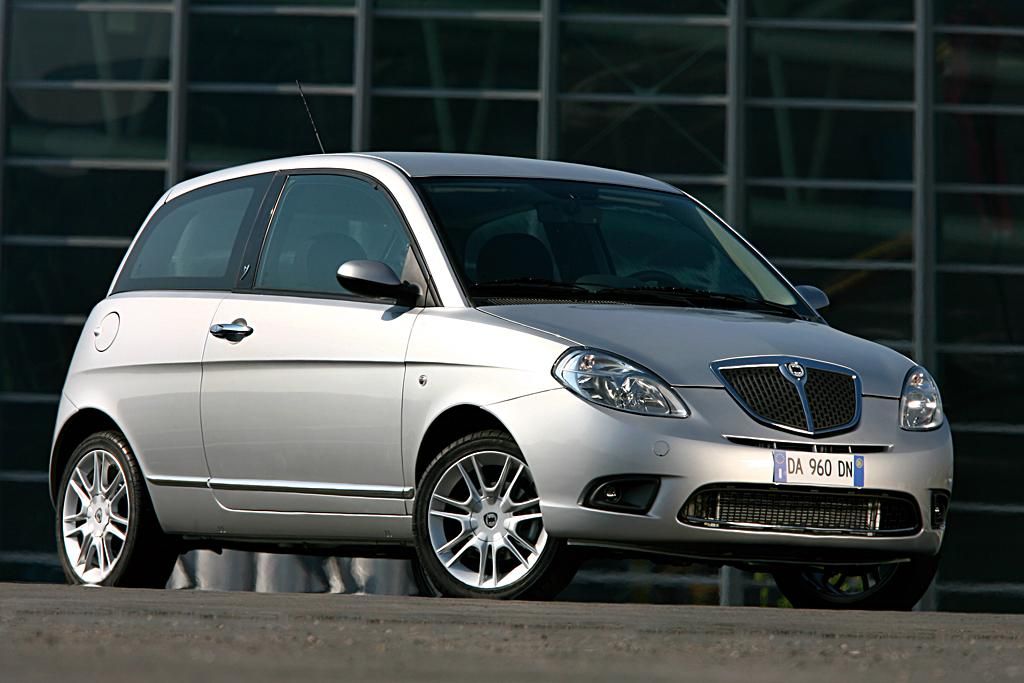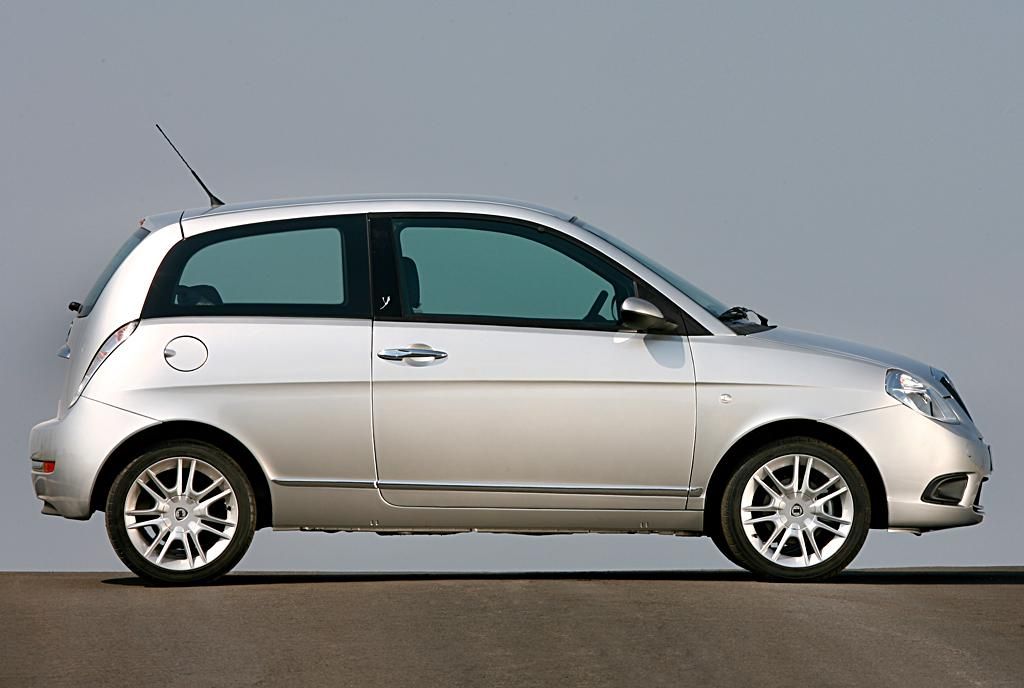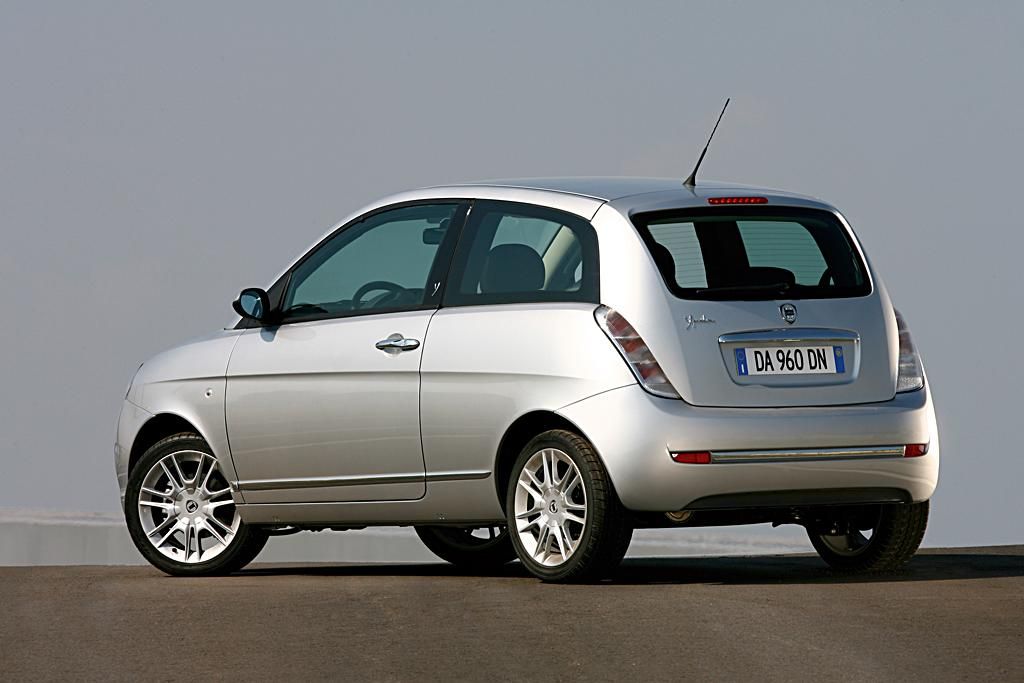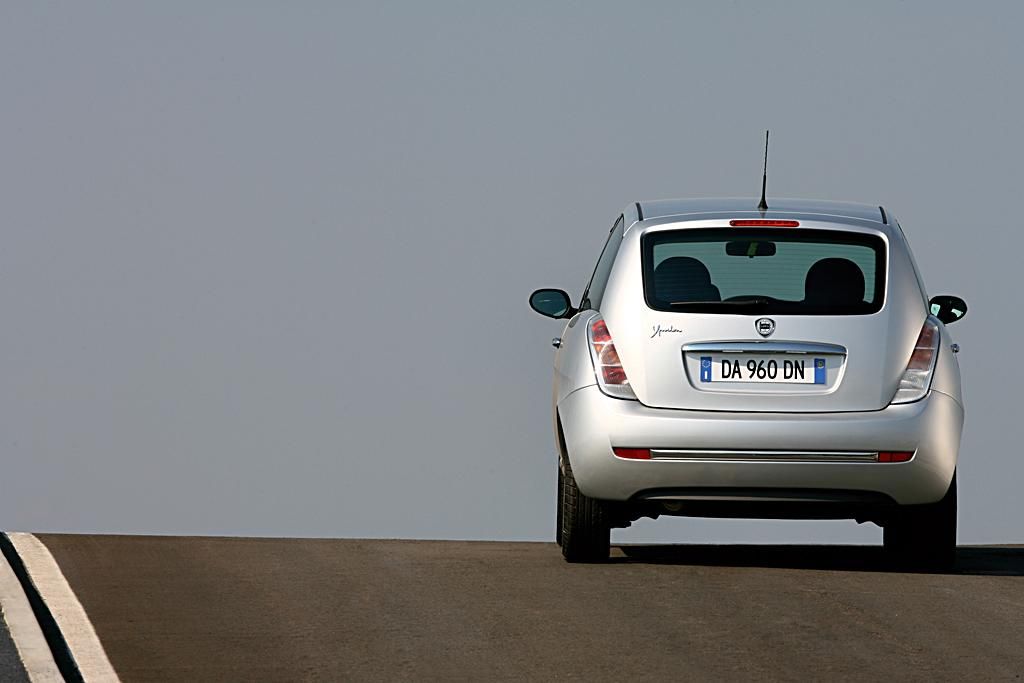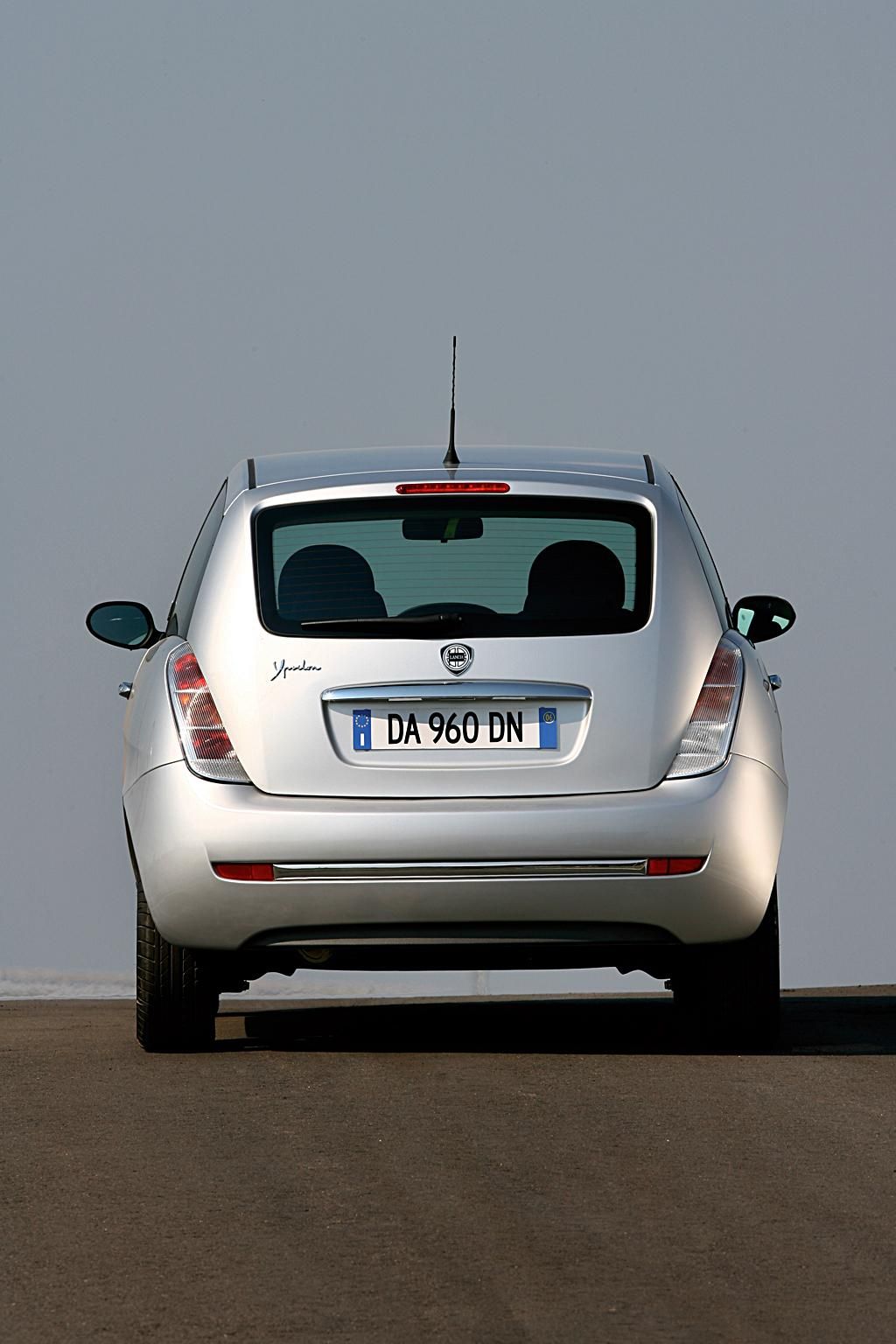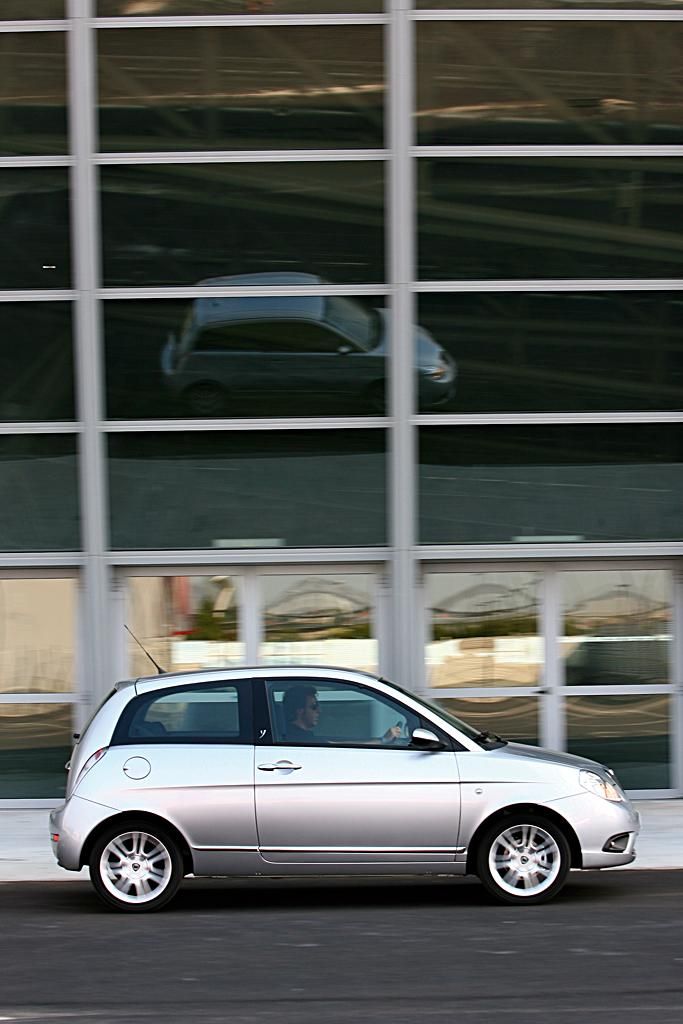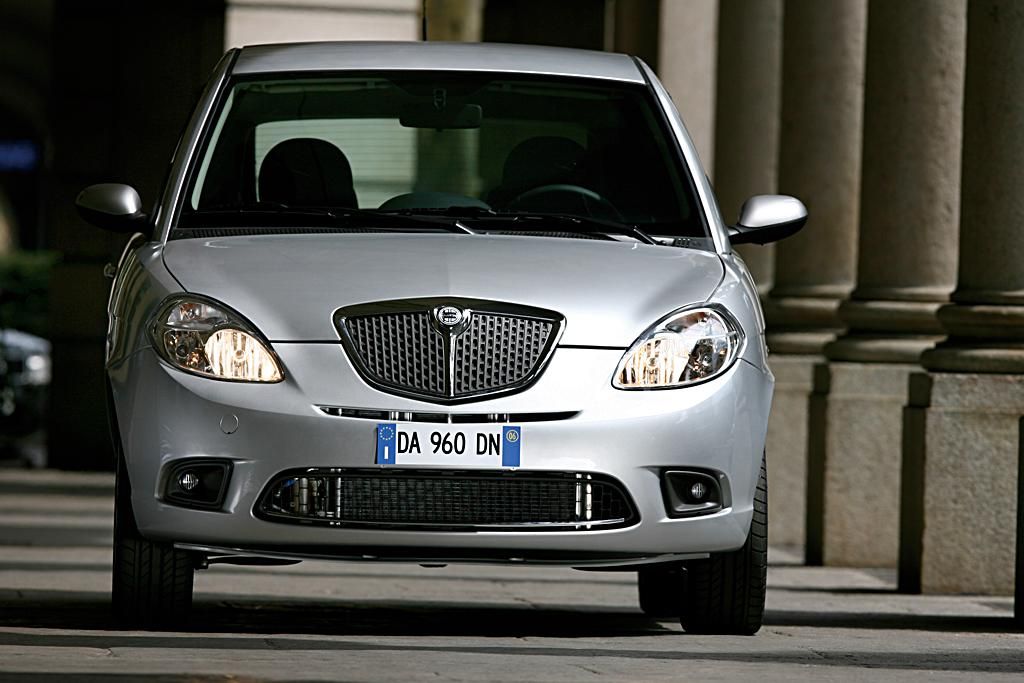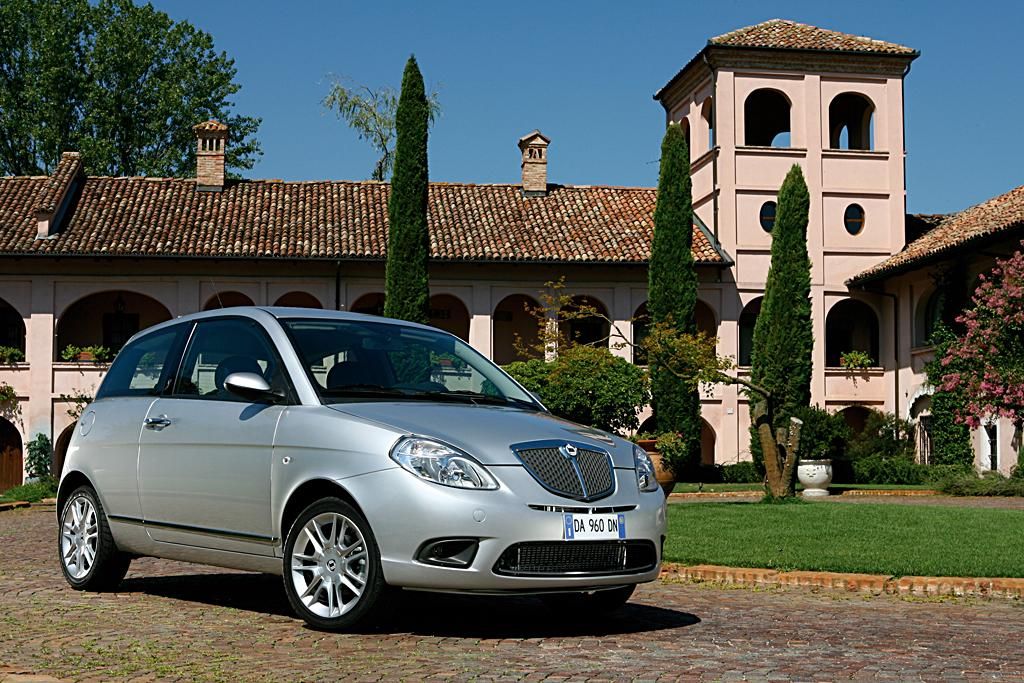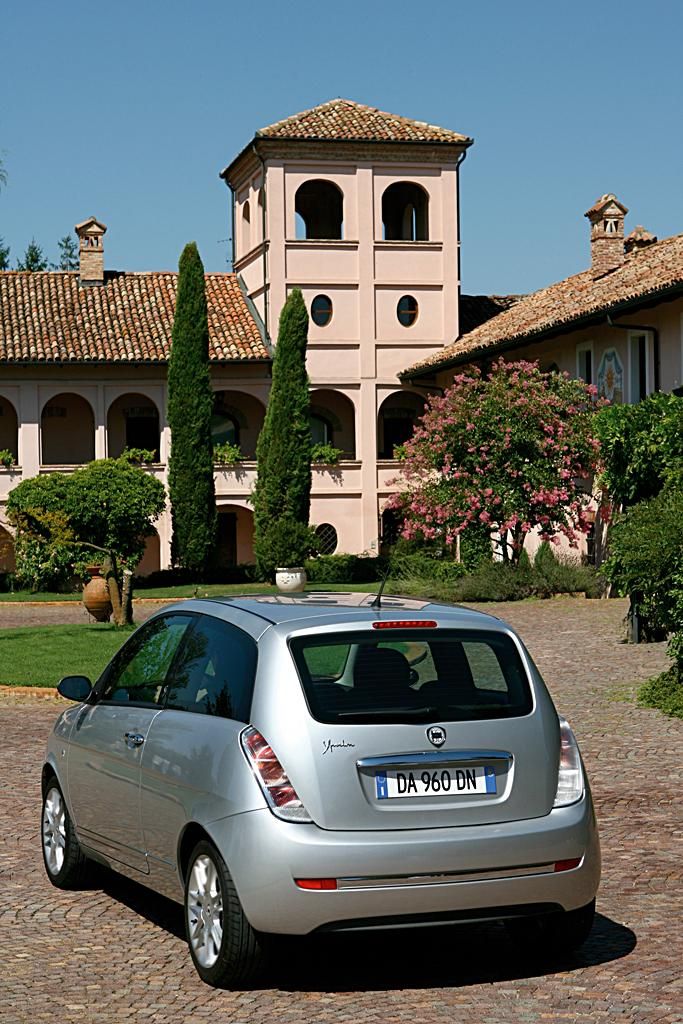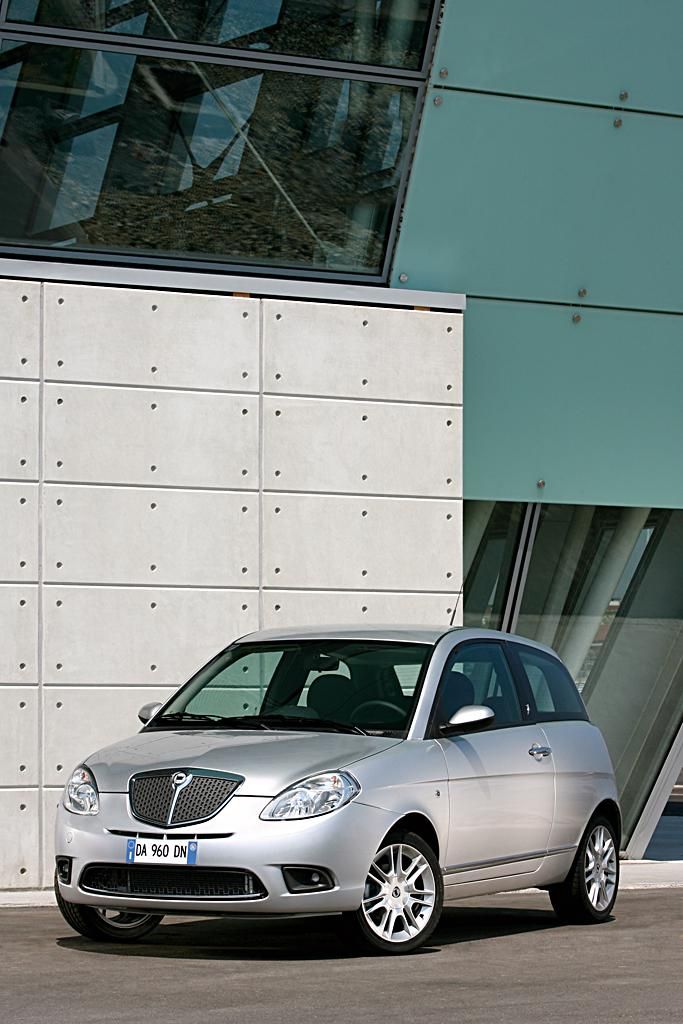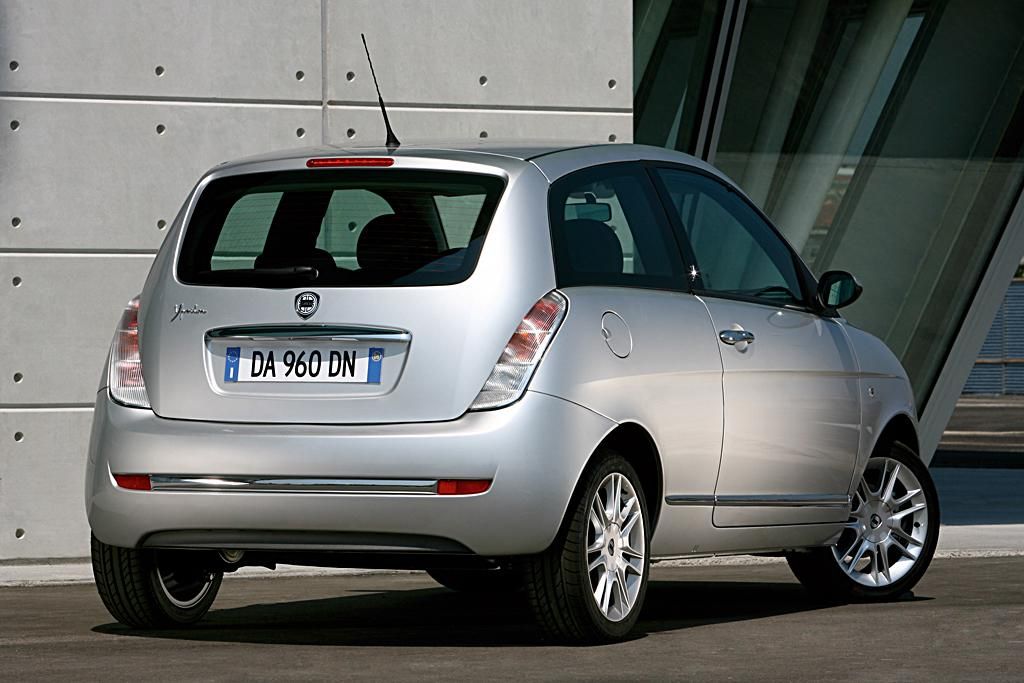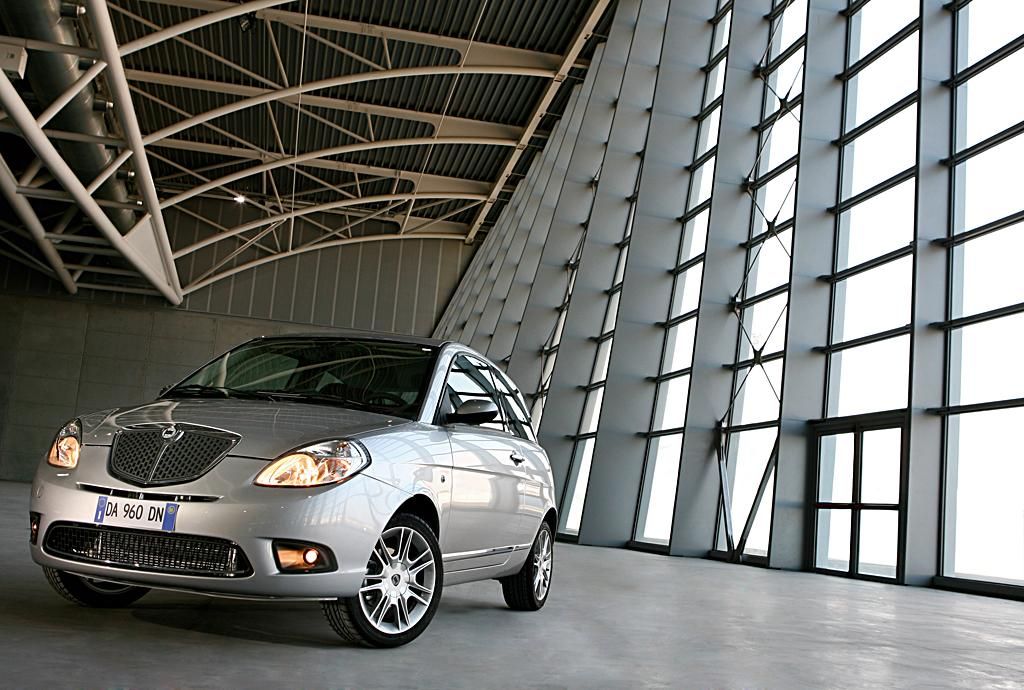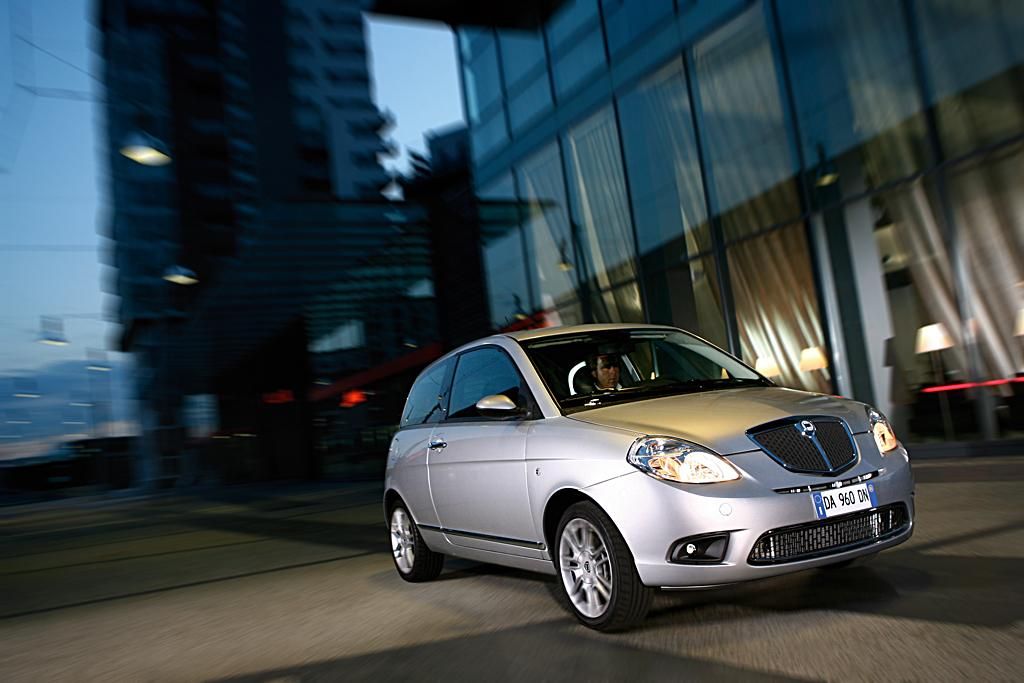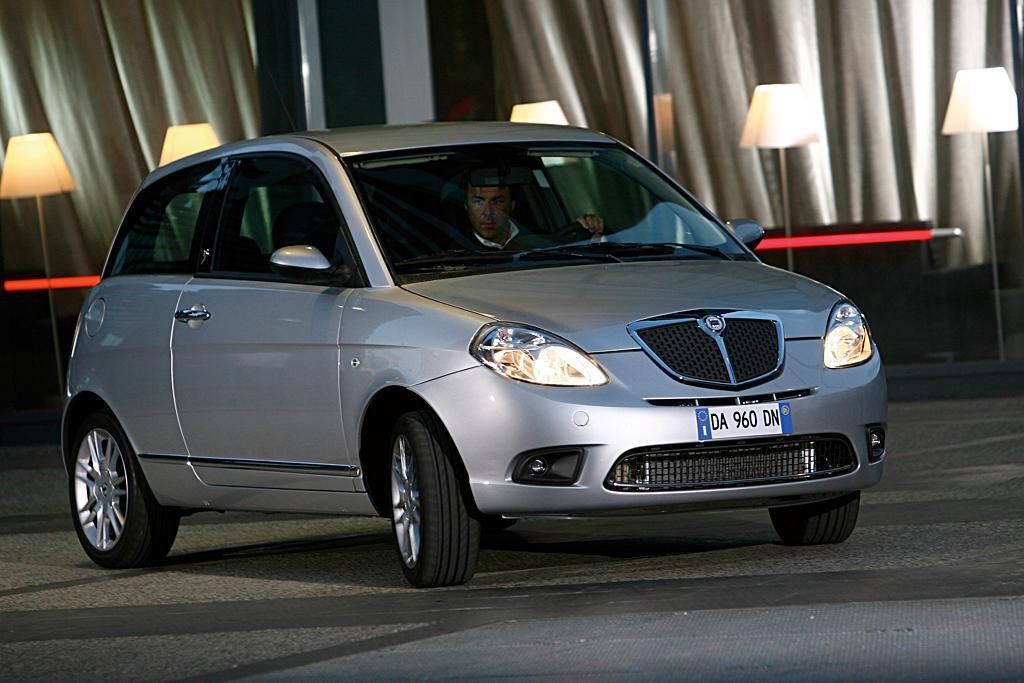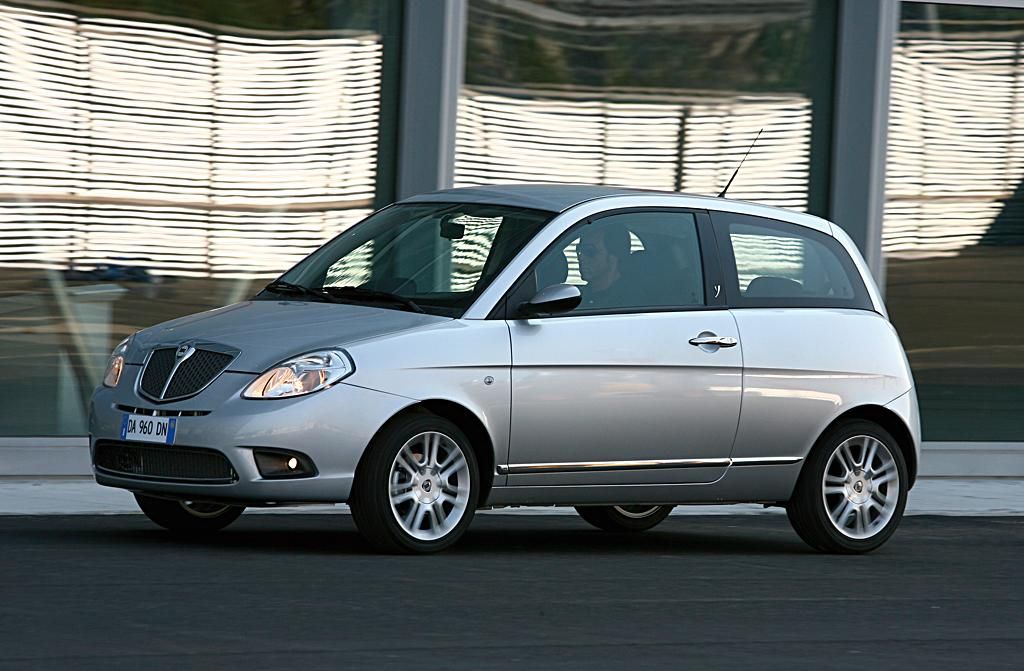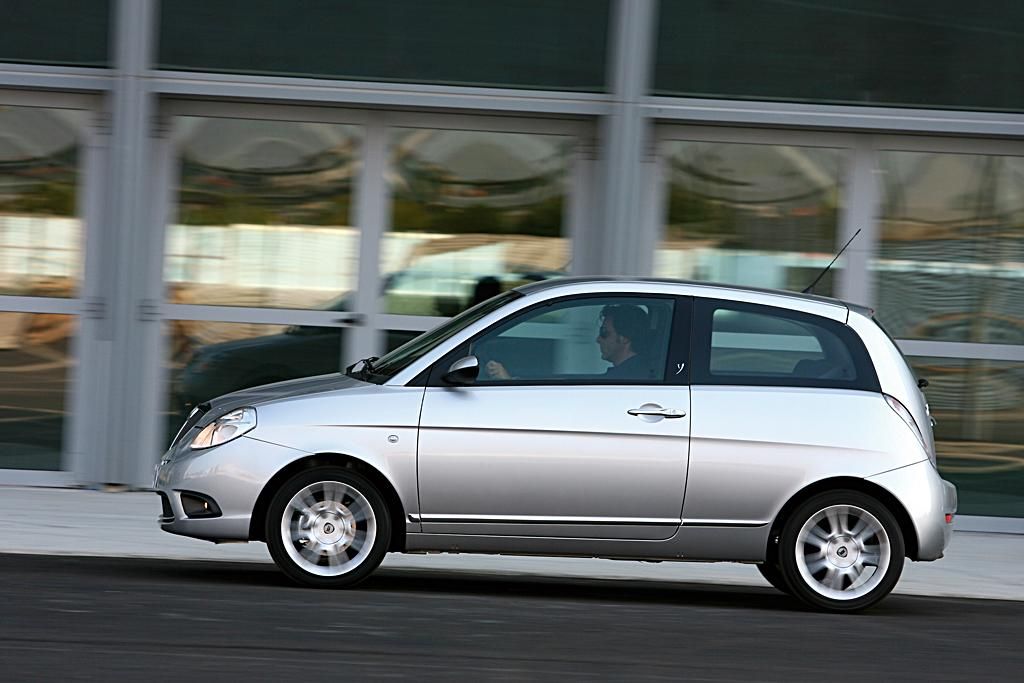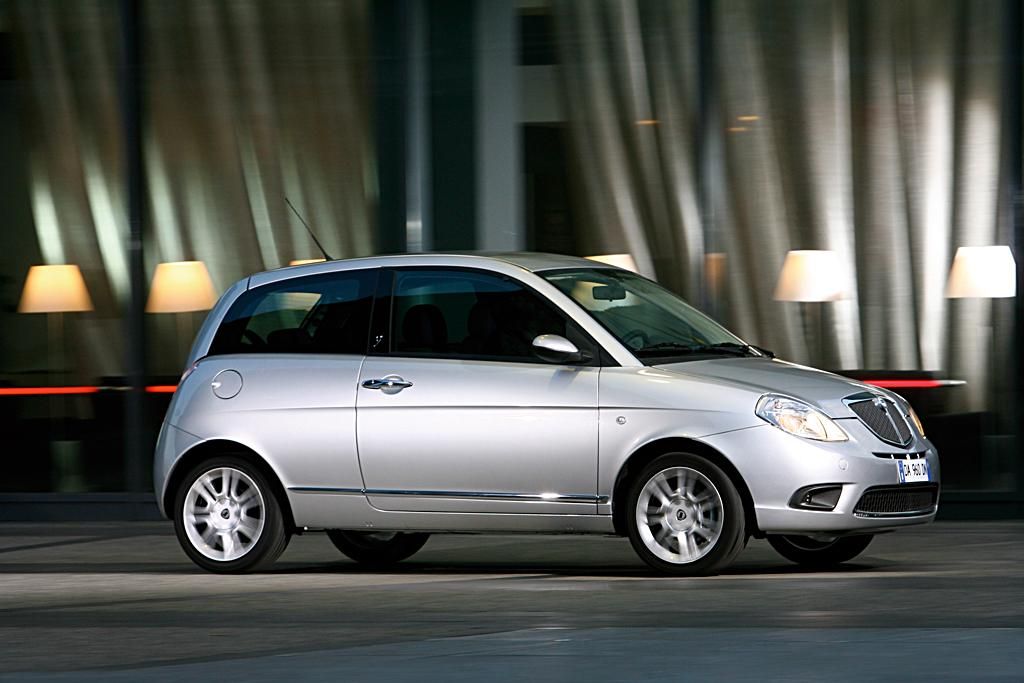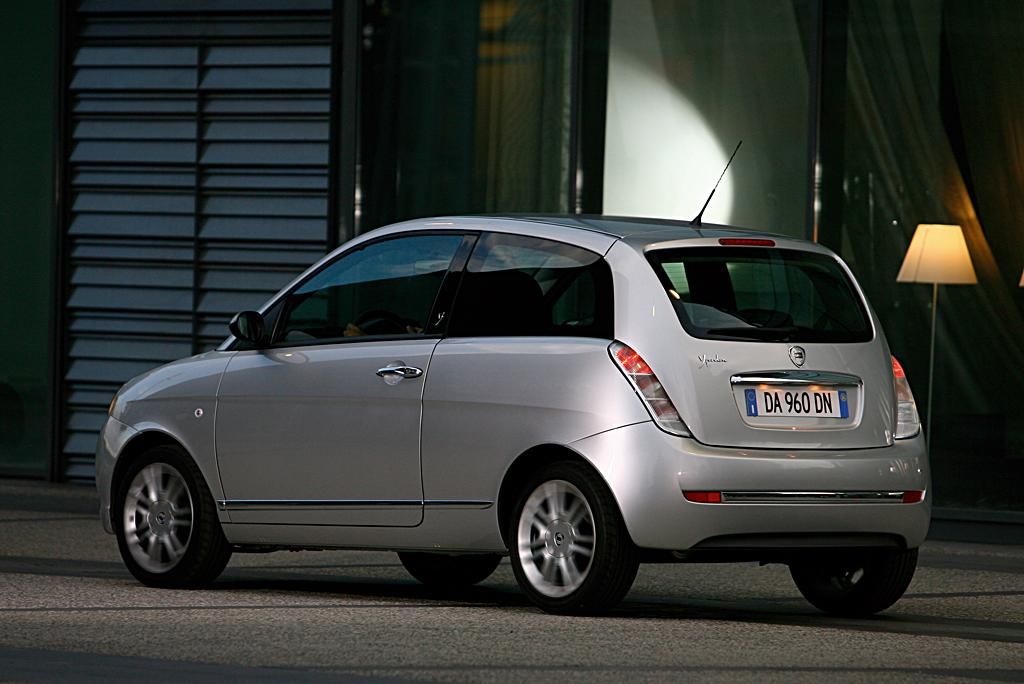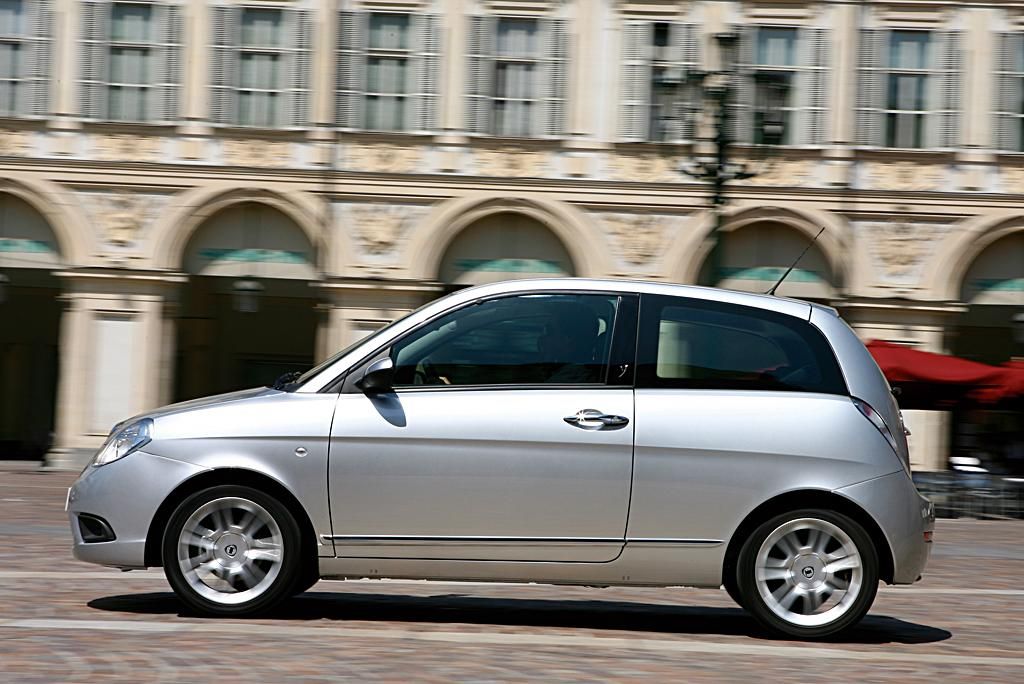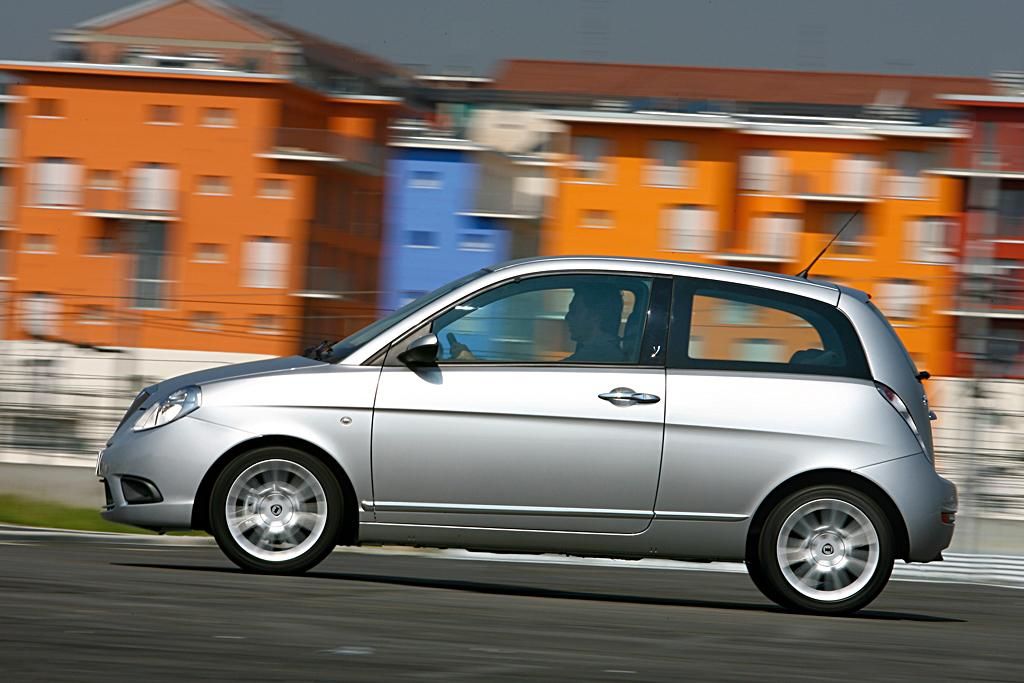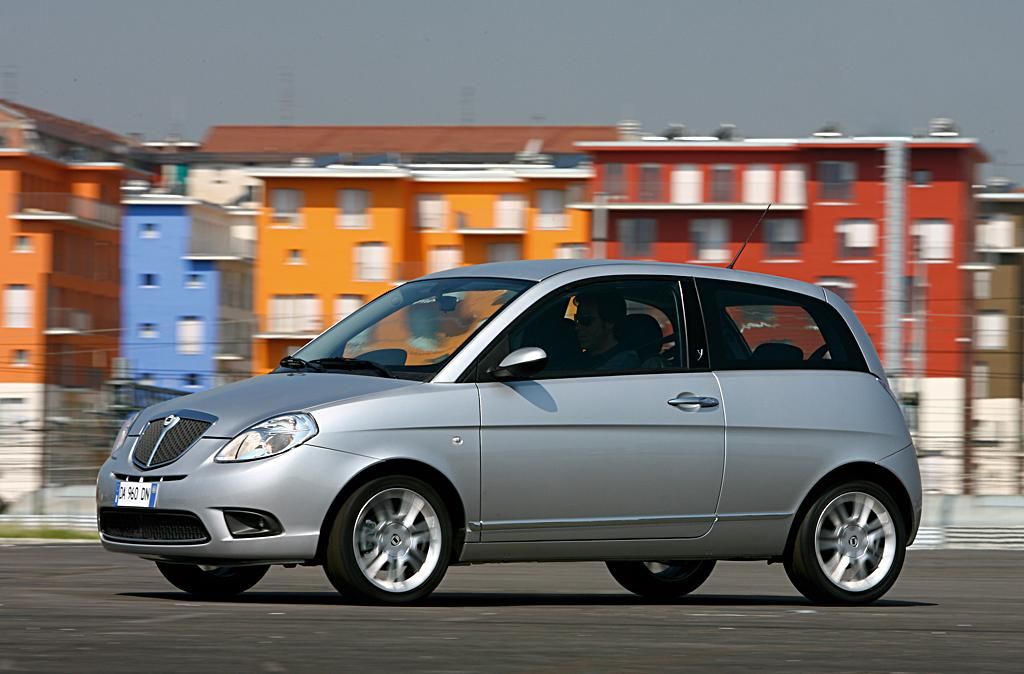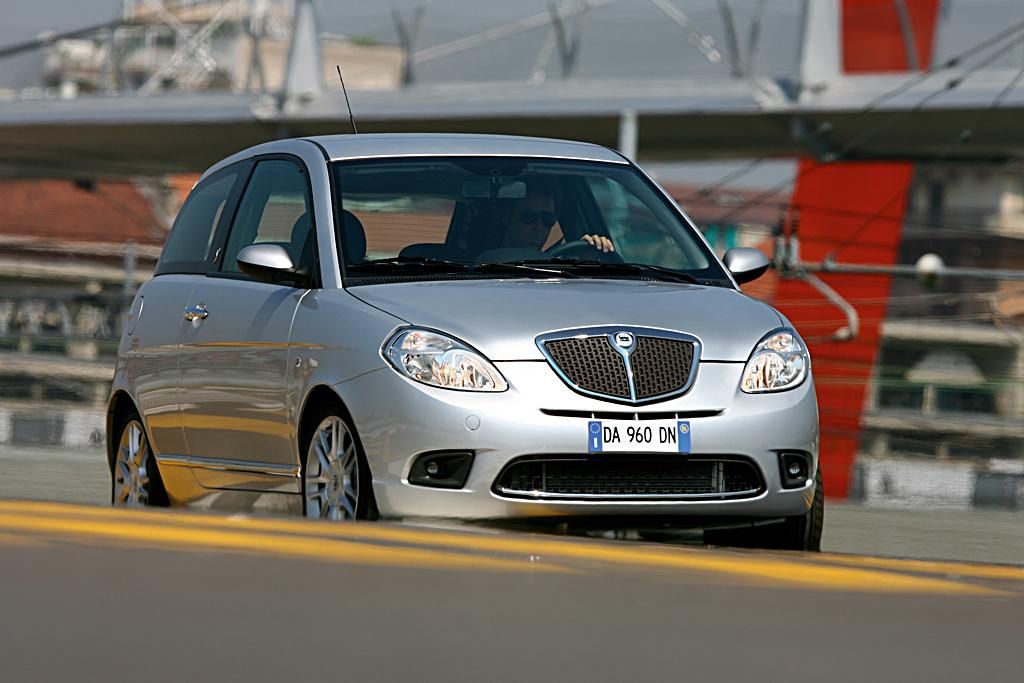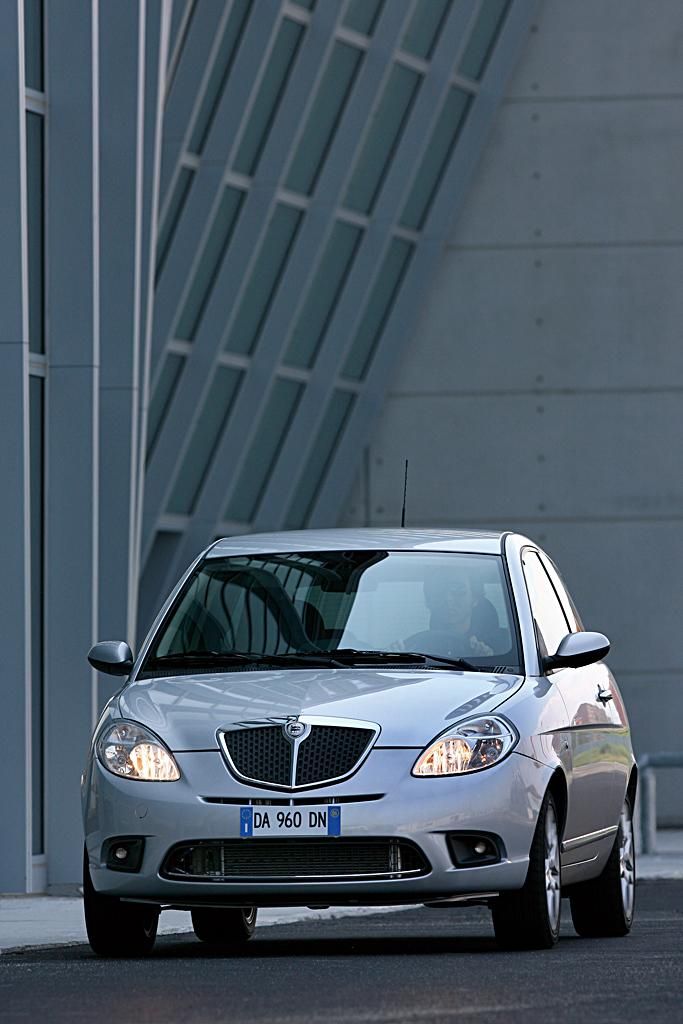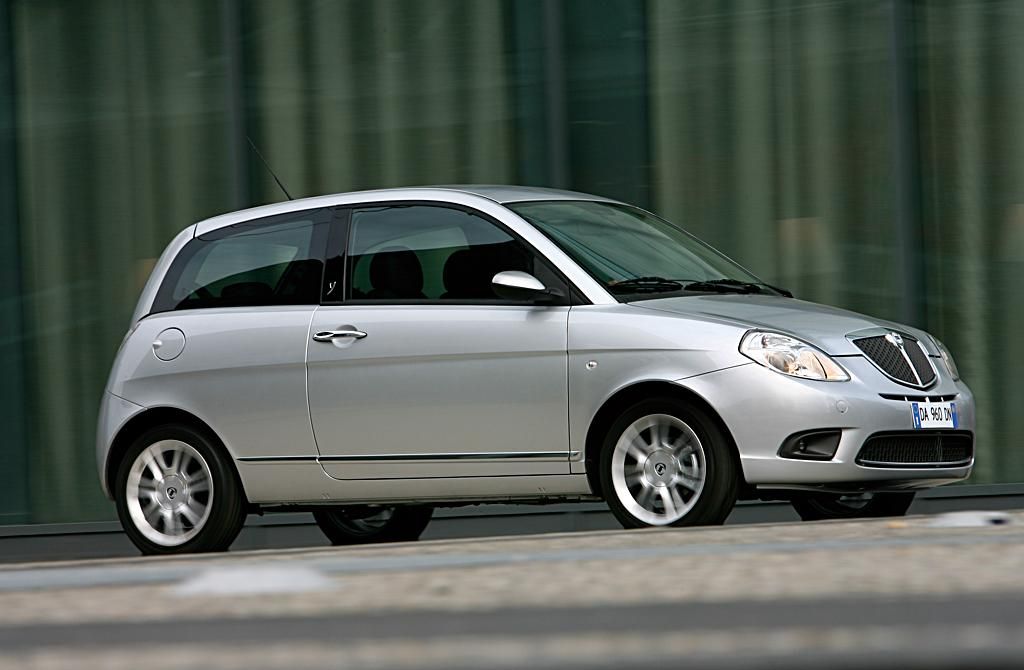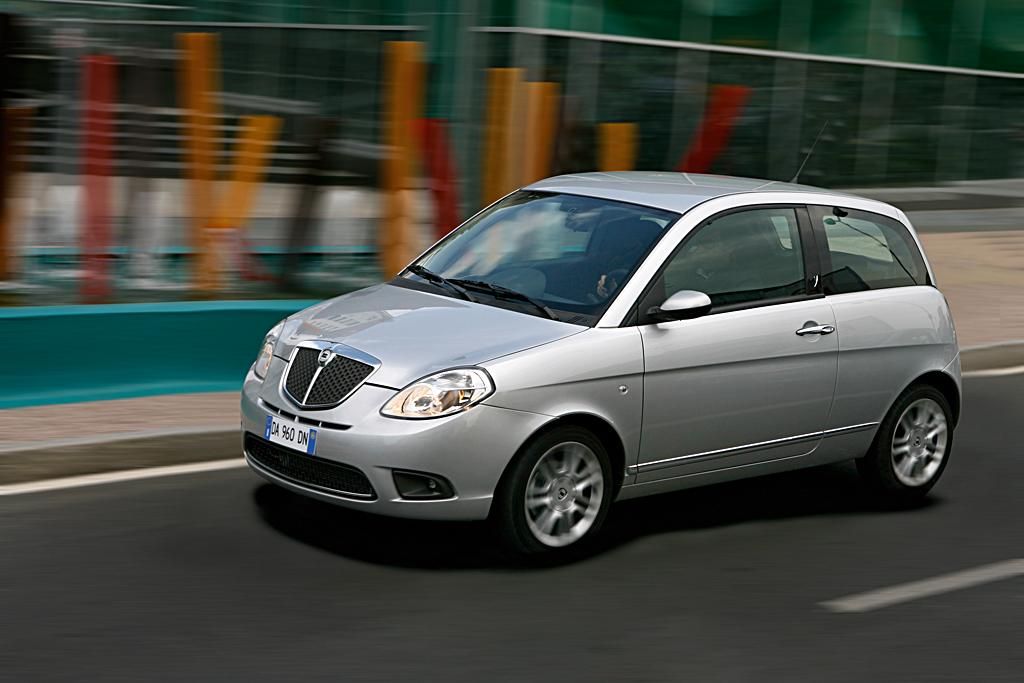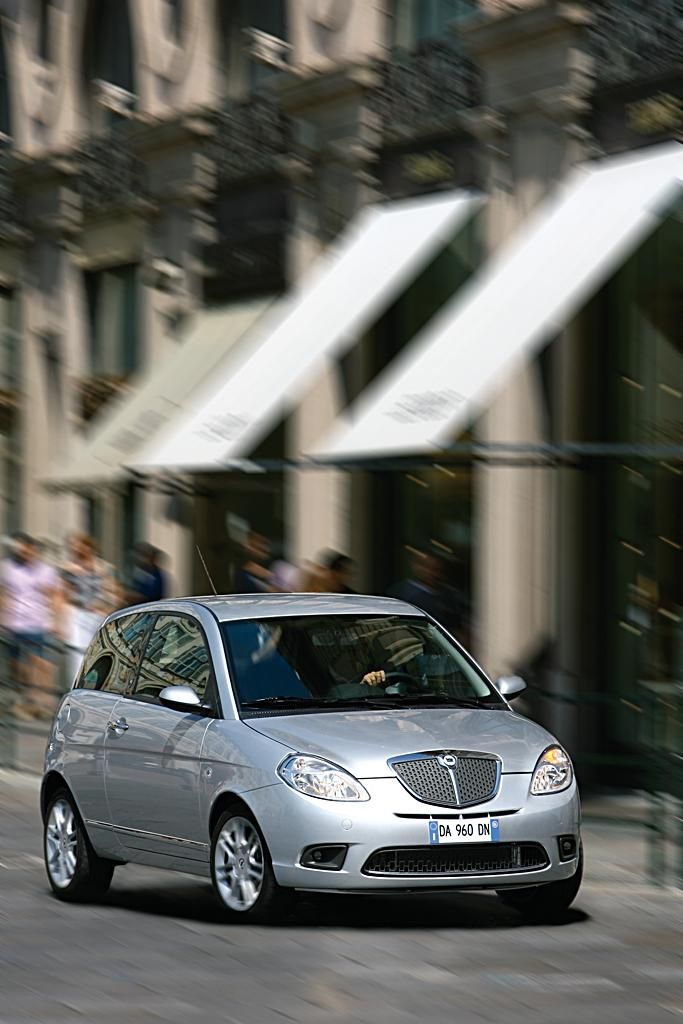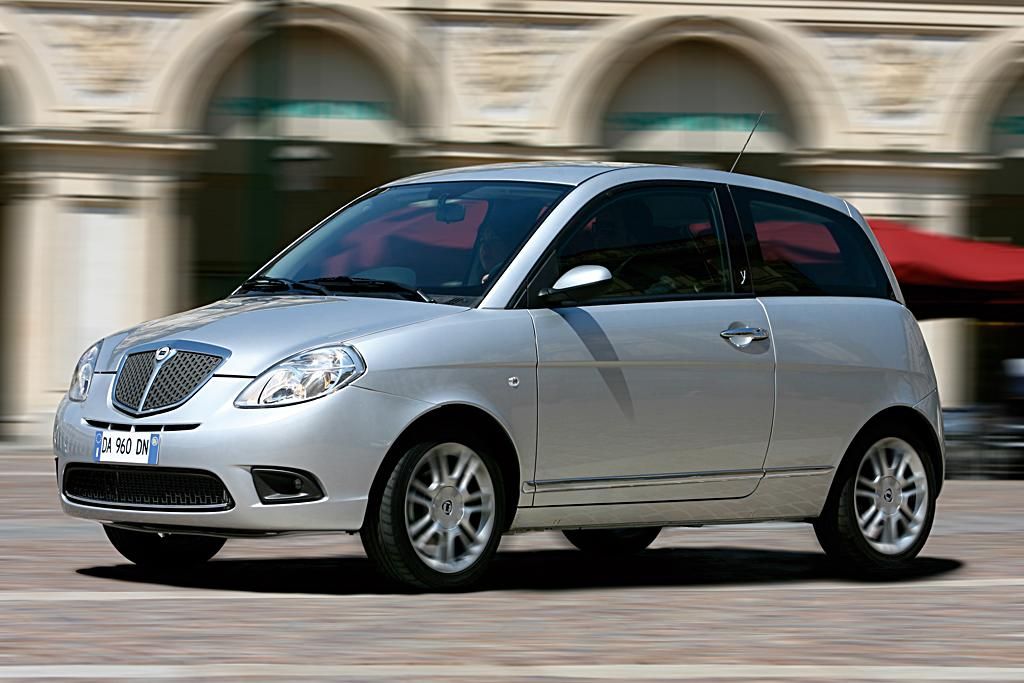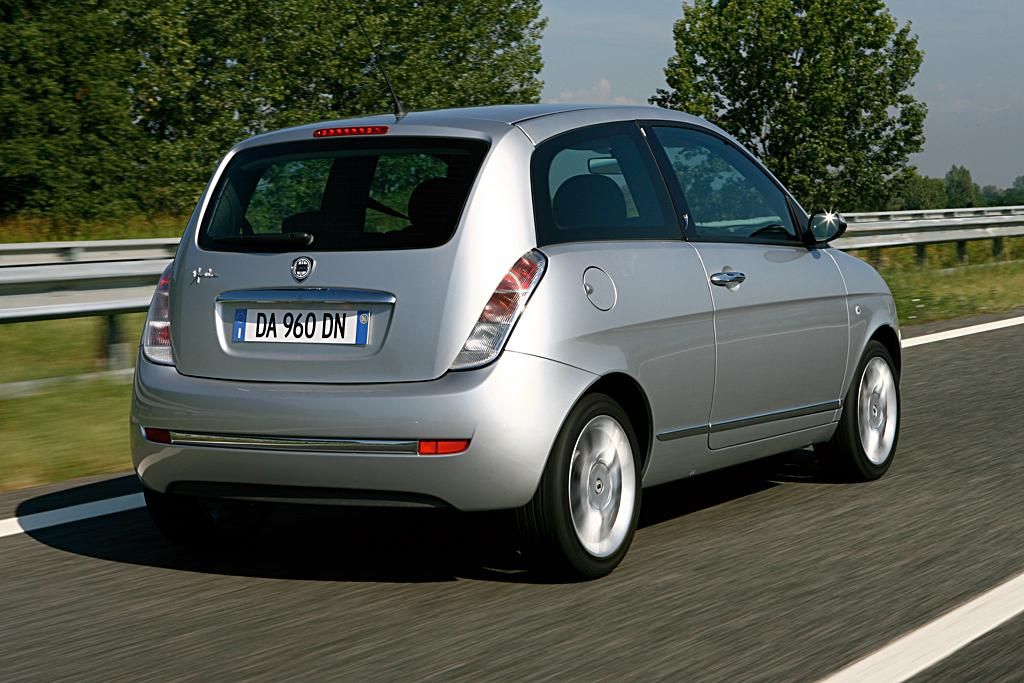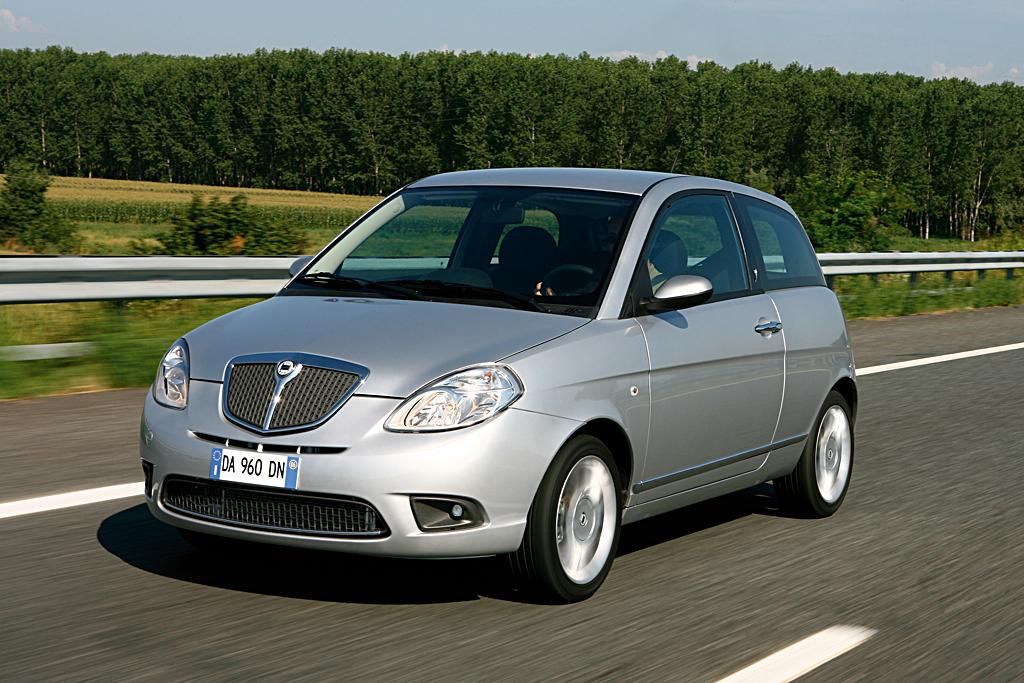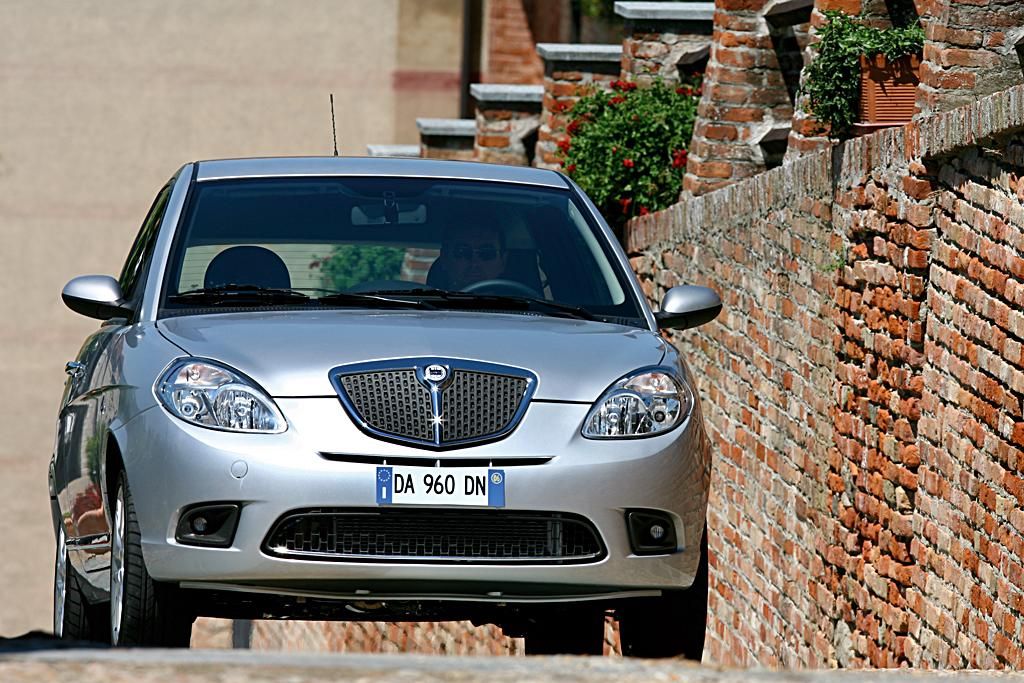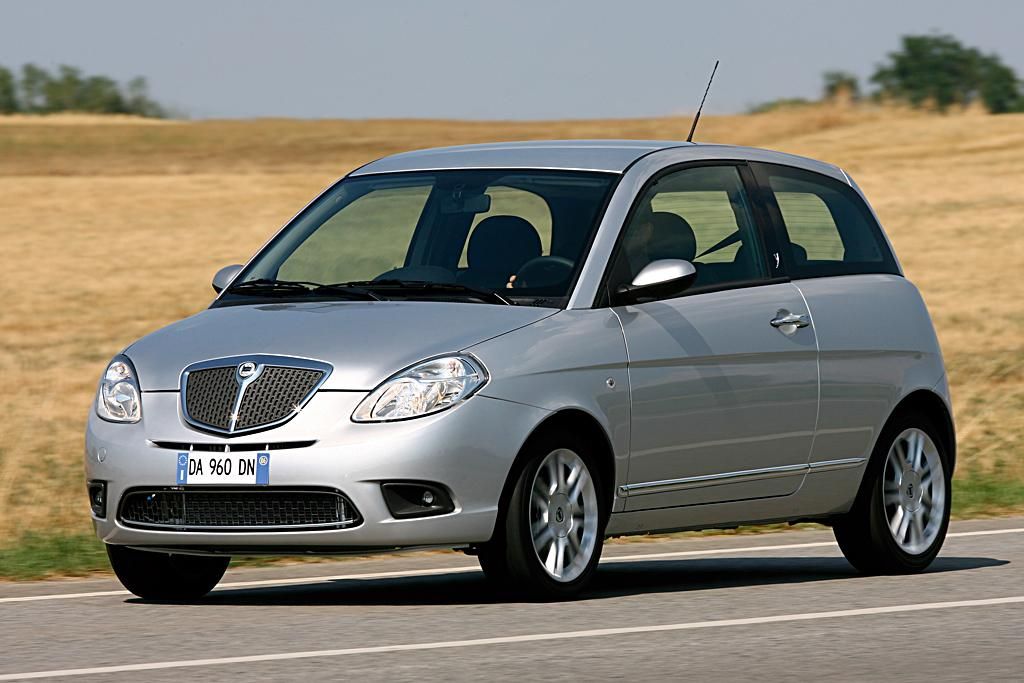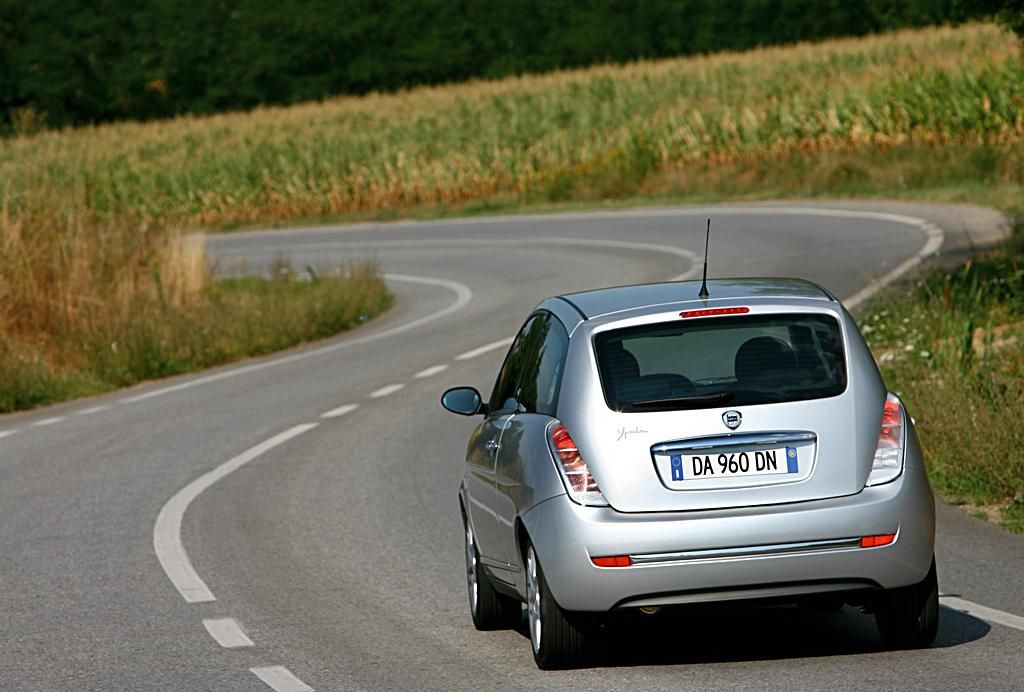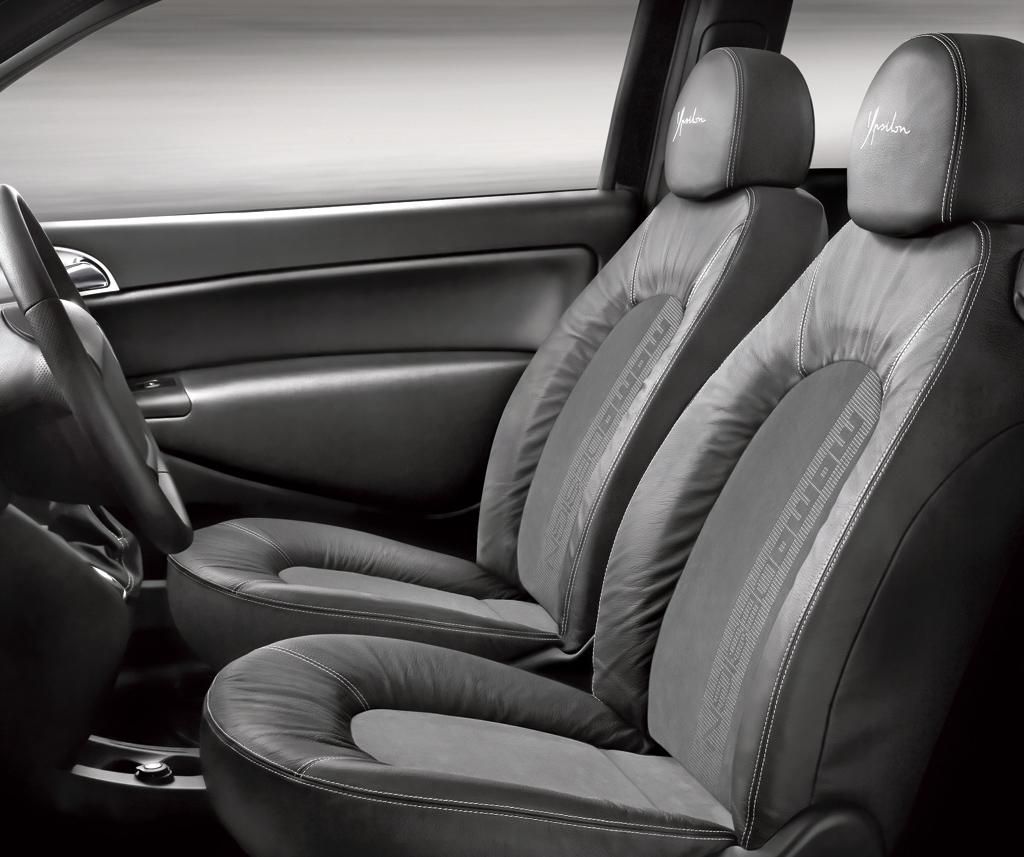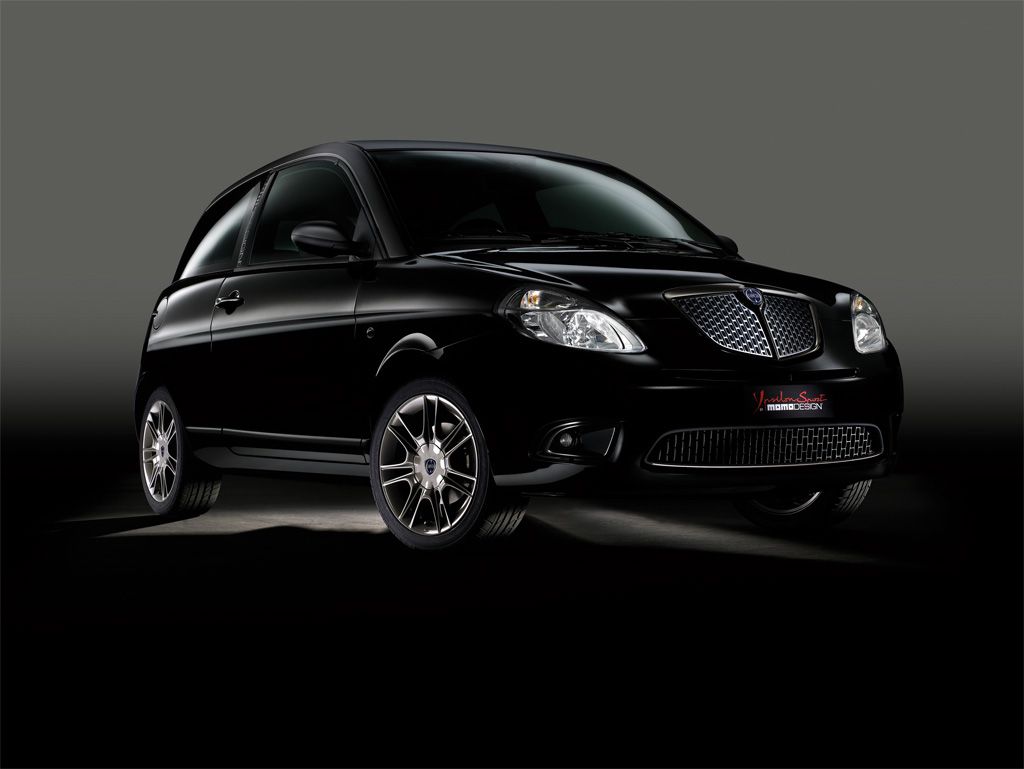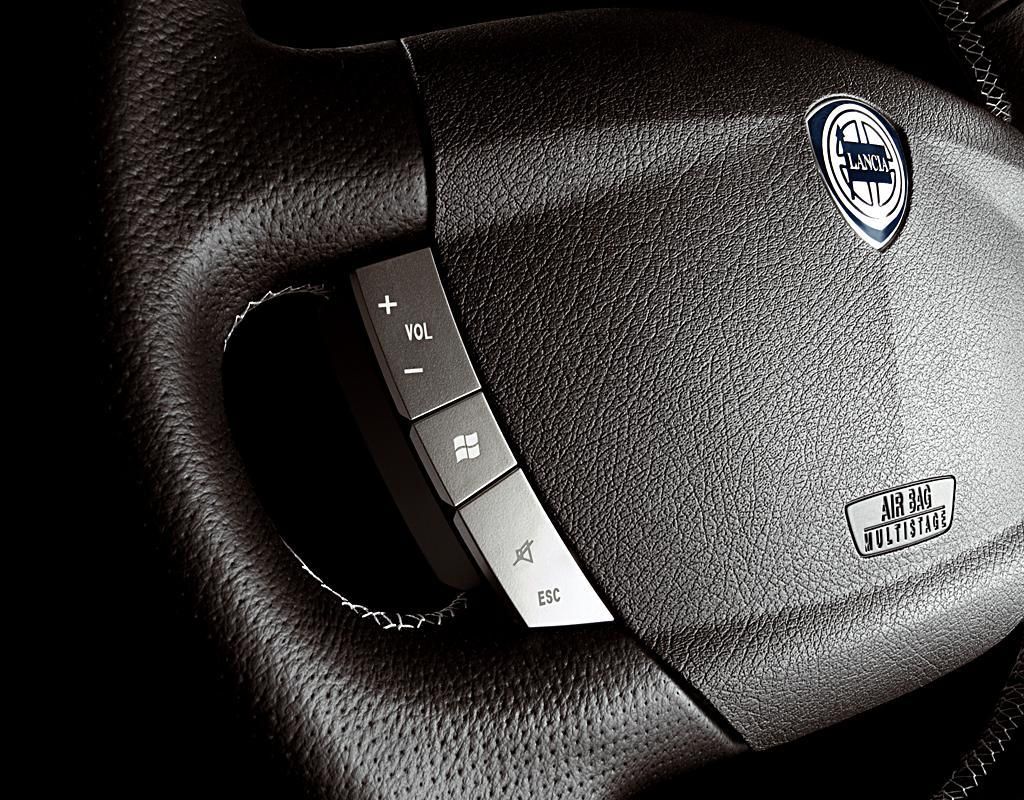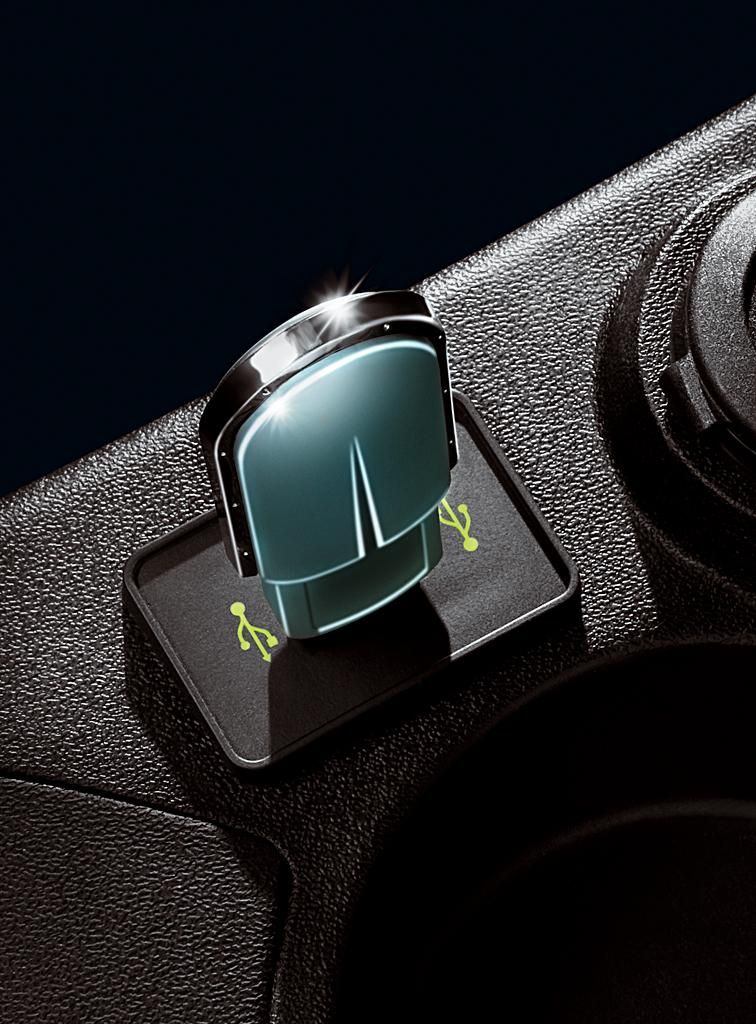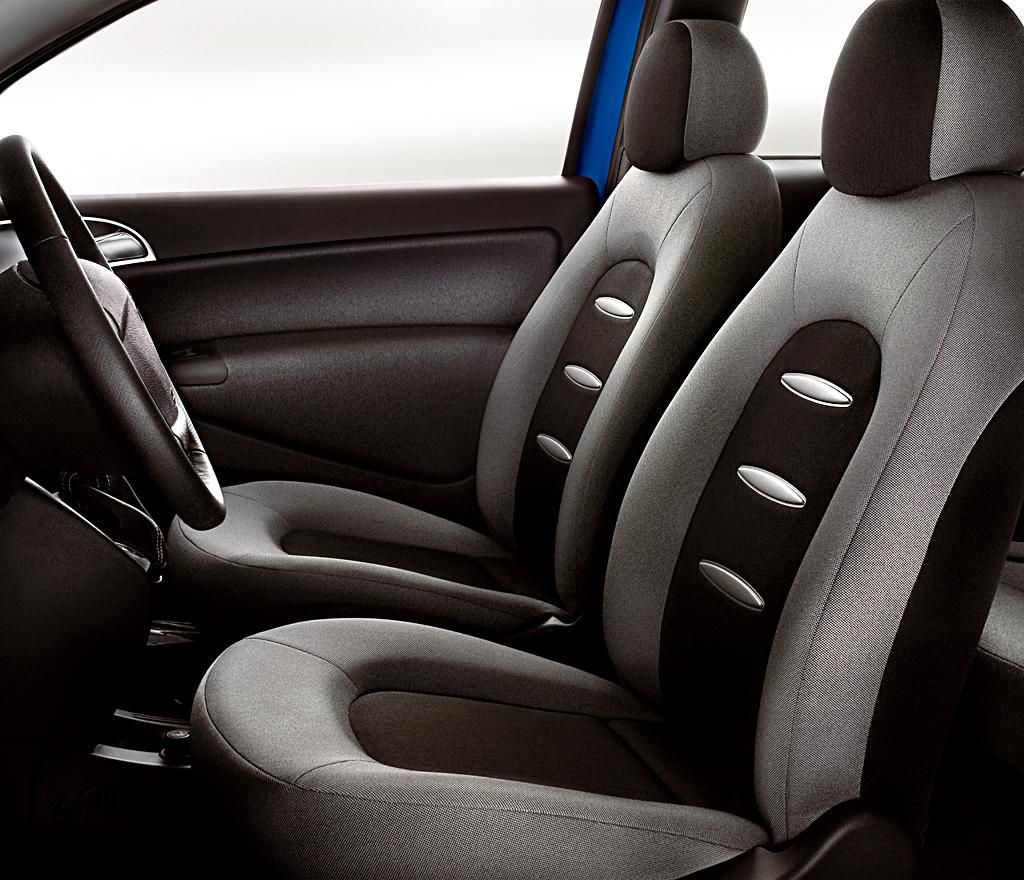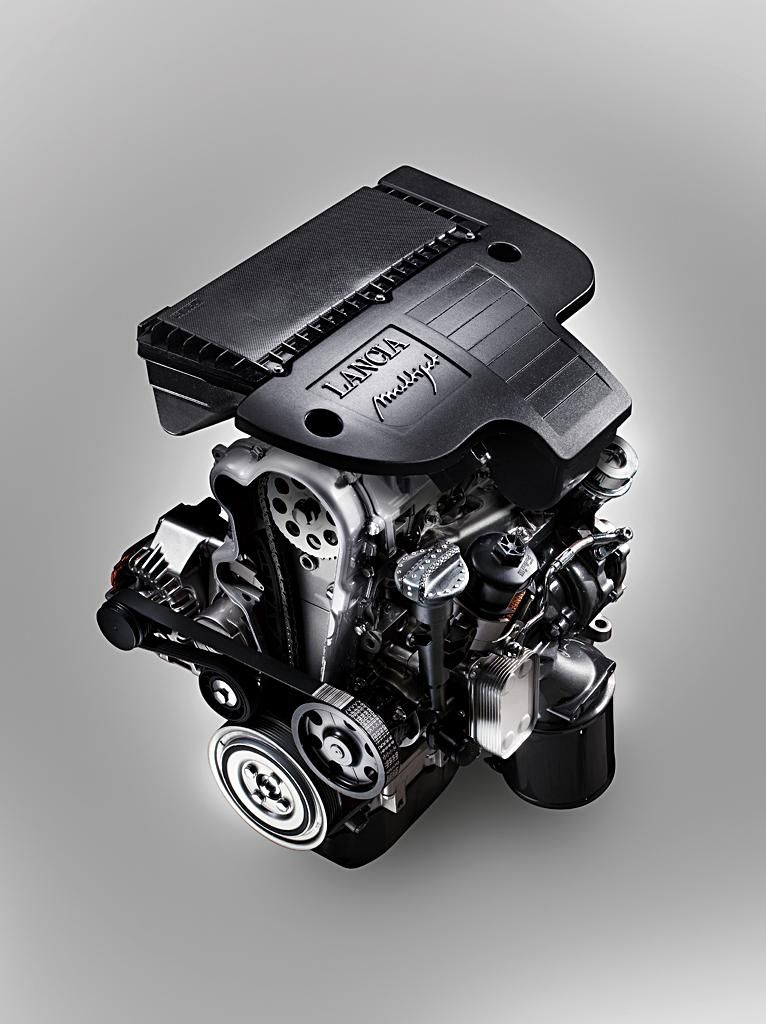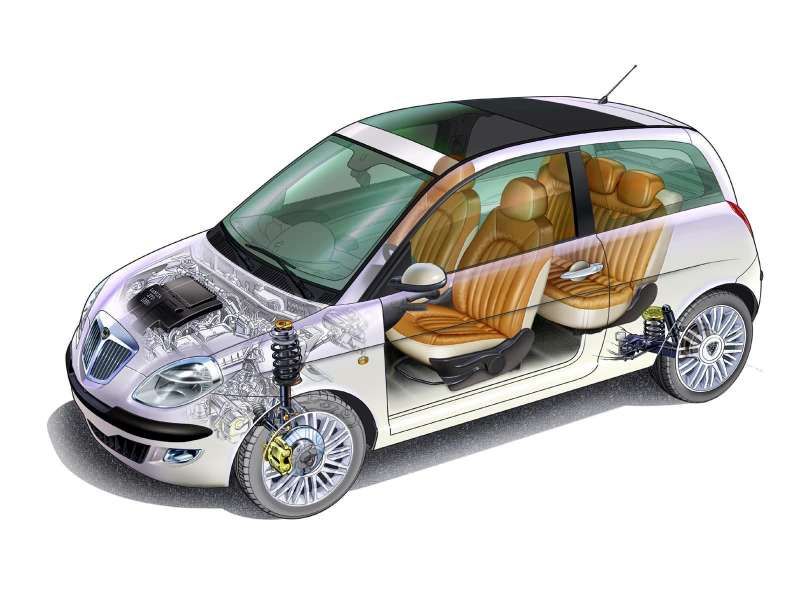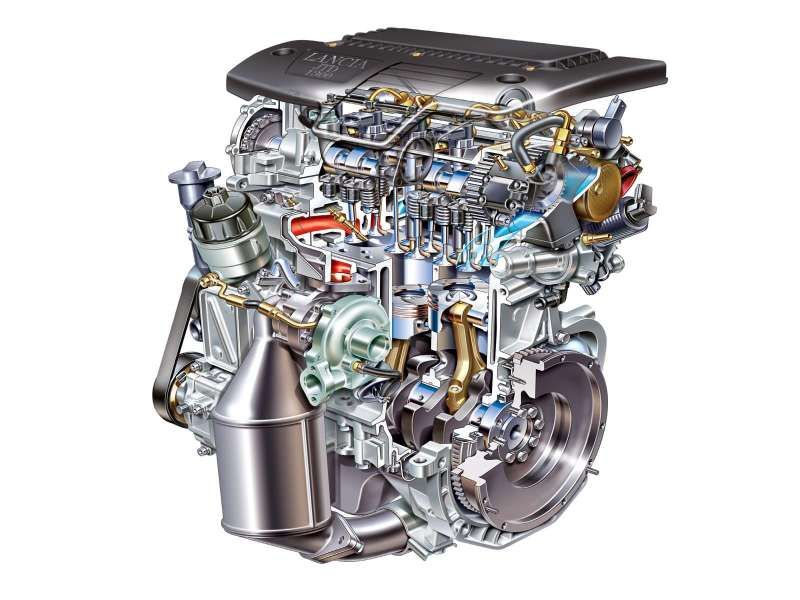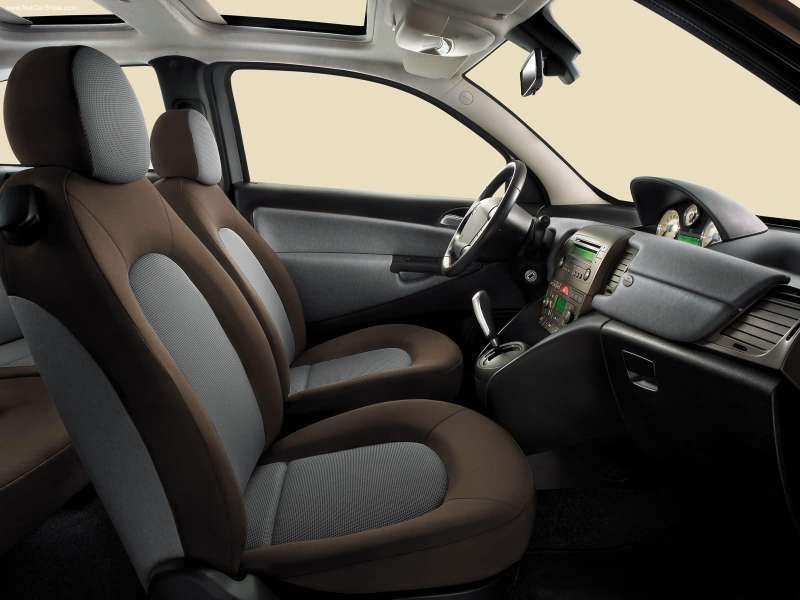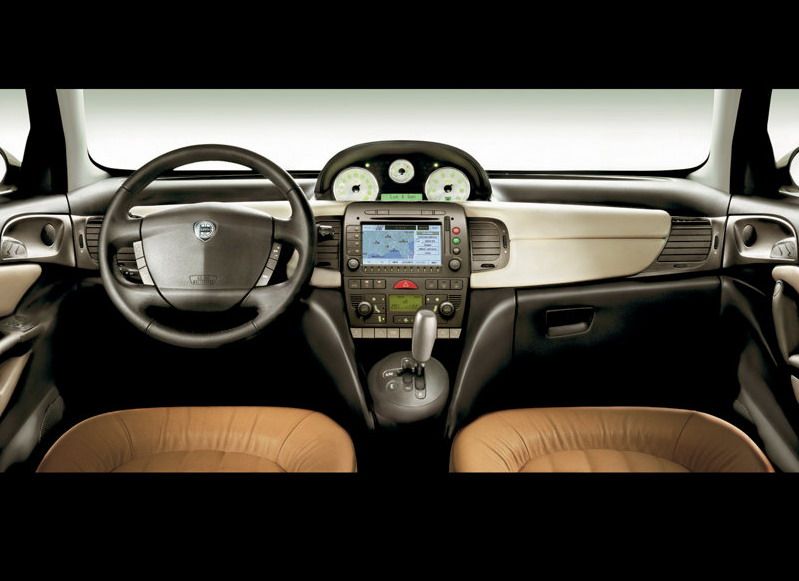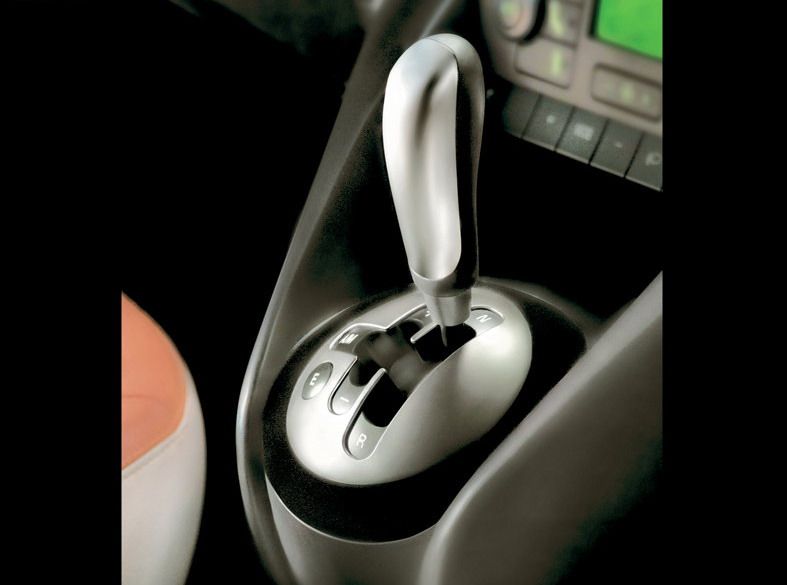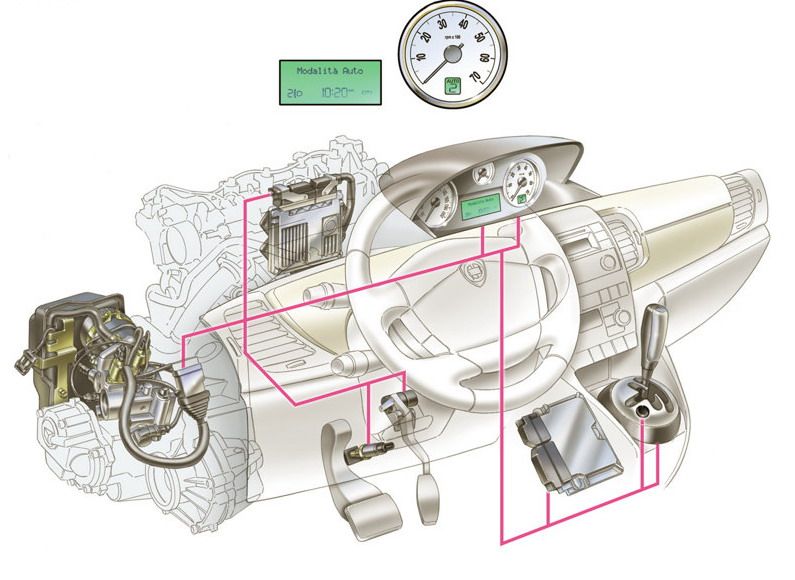2007 Lancia Ypsilon
- Make: Array
- Model: 2007 Lancia Ypsilon
- Horsepower: 95@5800
- Torque: 126@4500
- [do not use] Vehicle Model: Array
The New Ypsilon, recently introduced to the world at the 63rd International Venice Film Festival, marks the first step towards the future for Lancia. It is designed for demanding customers who are in a continuous quest for unique products. It has reinvented itself by building on an exterior look much appreciated by European motorists and an underlying nature that relies on innate good looks and style. The model has also evolved to offer more performance, more technology and more customisation options.
The New Ypsilon offers a better looking, more up-to-date style by adding a few clever touches that reflect new market trends while making the car look bigger to appeal to male drivers. The New Ypsilon comes with new petrol and diesel engines to cater for younger, more dynamic customers. These are all environmentally friendly with plenty of brio and power. The New Ypsilon is a veritable style icon for its personality and charm, now enhanced by the broadest colour palette in this segment: the very thing for the style conscious woman. The model features a truly extensive range of very different products, evidenced by no fewer than four specification levels (Argento, Oro Bianco, Oro Giallo and Platino), which will be able to satisfy premium customers of four types, each with their own tastes and needs: men, women, the young and the not so young.
The New Ypsilon aims to become the Premium B option for everyone throughout Europe since it represents the state-of-the-art in the exclusive mini field. It is designed for sophisticated customers who love to stand out in a crowd and seek satisfaction above all when using their car. And, like all the best Italian luxury products, the New Ypsilon blends outstanding style with cutting-edge technology. This winning combination is complemented by highly sophisticated good looks that give a new feel to the famous Lancia shape, perfectly matched specifications and many customisation possibilities: suffice it to say that more than 700 product options are available.
The New Ypsilon’s original styling, inspired by that of the Ardea in 1939, draws lifeblood from its past, grows in the present and anticipates the future. The result is a car with an original profile, fully in keeping with new demands for a softer, more sensual and feminine shape. The most striking thing of all is the unmistakable Lancia sense of breeding. The sculpted front, for example, reveals a pleasing symphony of shapes, all dominated by a large upright grille. The light clusters are gem-like and clean-shaped in line with the style philosophy that typifies new Lancia cars.
This highly appealing car is up with the market leaders but also consistent with Lancia’s history. It is very compact but offers a surprising amount of interior room and outstanding comfort. Although it is only 378 centimetres long, 170 wide and 153 high with a wheelbase of 239, the Lancia Ypsilon can accommodate four to five people and comes with one of the roomiest luggage compartments in its category (215 to 290 dm3 if the sliding seats are pushed fully forward). It is at the top of its segment for interior passenger room.
The New Ypsilon assures predictable performance at all times while also guaranteeing driving satisfaction. This is partly due to the five available engines that are now even more powerful and spirited with respect for the environment: the coming into force of EURO4 legislation will see the advent of a DPF device that adjusts emission levels by removing particulate altogether. In detail, the new engine range offers two Multijet power units (a 75 bhp 1.3 16v unit and a 90 bhp 1.3 16v unit), both combined with a manual gearbox or a robotised sequential unit known as the DFN (standing for ‘Dolce Far Niente’). These two turbodiesel units are joined by two feisty petrol engines: a 95 bhp 1.4 16v unit available with manual gearbox or DFN robotised sequential gearbox; and the new 77 bhp 1.4 8v unit available only with manual gearbox. The latter power unit is also one of the most frugal in its category: 5.5 l/100 km over a combined cycle. The last member of the range is the tried and tested 60 bhp 1.2 8v unit able to combine great torque and smooth operation with a relatively small cylinder capacity.
The new car is set to win over the market with an understated charm that strikes a clever balance between stylistic sophistication and a good equipment specification. A generous set of prestigious creature comforts also make this car a veritable pocket flagship: including the extensive Granluce sunroof, an automatic dual zone climate control system, Bose® Hi-Fi and the innovative Blue&Me® Windows Mobile-based system created as a result of a joint venture between Fiat Auto and Microsoft. This changes the paradigms of in-car communication, information and entertainment for greater comfort and improved quality of time spent on board.
The New Ypsilon yet again demonstrates the great versatility of the pocket flagship formula. This successful model will take Lancia forward into a new era where manufacturers cannot rely on the product alone to give their cars an edge over their rivals. Neither will the product be the only motivating factor to attract potential customers. For this reason, Lancia has developed major new sales and aftersales products to satisfy the desires, needs, tastes and aspirations of a host of different customers.
-----
Design
New styling for the ultimate in customisation
Retro hints cleverly reworked for a new audience. This is the original and appealing idea behind the styling of the Lancia Ypsilon. Suffice it to say that it was inspired by the unforgettable Lancia Ardea. The shape has been creatively re-interpreted and the car has been adapted to present-day handling needs. The result is a car with an original profile, fully in keeping with new demands for a softer, more sensual and feminine shape. The most striking thing of all is the unmistakable Lancia sense of breeding. An air of indefinable Italian-ness somehow turns an Italian-made product into a unique object of desire.
It happens in the case of fashion garments and accessories. And it happens for cars. Any car’s success is the result of a lucky break, a flash of stylistic intuition backed by research into new taste trends, emerging customer needs and projections relating to market and rival model trends. And then this complicated equation is judged by the harshest yardstick: time.
Prominent new features on the model include an original grille and special mouldings that are different for each specification. In detail, the sporty grille on the Argento version is in metalluro while the grille and side mouldings are chrome on the Oro Bianco and Oro Giallo specifications. Lastly, the Platino version offers a chrome grille with hot stamped detail and chrome side mouldings.
The sculpted front end reveals attractive proportions and is dominated by a large vertical grille that communicates a sense of superiority and class. The immediate impact as far as the public is concerned is of a compact car that is also elegant and refined. This impression is reinforced by wraparound bumpers painted the same colour as the body, with removable rubber bumpers. The lack of corners and protruding parts on the bumper limits possible damage to pedestrians if they are struck lightly in town traffic. The bumper also incorporates the foglights.
The light clusters are gem-like and clean-shaped in line with the new brand style philosophy. The headlights are strikingly bright. As an option, they can also be fitted with a light sensor that turns them on automatically in a tunnel or at dusk.
This spareness of form is also apparent in the side view and the car’s tail end. The compact, beautifully proportioned body features elongated sides marked by a stylish horizontal line of great visual impact. This motif runs along the length of the car, over the wheelarches, to form a conceptual link between front and rear. This seamless appearance makes the Lancia Ypsilon look compact and safe yet also thrusting and ready to pounce.
Lancia styling cues are again apparent at the rear, where tall upright tail-lights enhanced by a slender, chic chrome frame enclose a generous tailgate with a finely-balanced mix of metal and glass. The overall impression of a solid, protective car is increased by a styling strategy that causes the lines of the rear end to converge on a single imaginary focal point situated low down behind the Ypsilon. Big front and rear bumpers increase the impression that the car is standing on a solid base.
Another new external attraction of the New Ypsilon is a colour range made up of no fewer than 15 body shades that emphasise the model’s smooth lines still further (7 brand new) and 9 new ‘b-colore’ liveries: this is the most extensive range in the segment, and one of the most extensive absolutely: more evidence of Lancia’s attention to colour as a representation of style and Italian flair. As far as the Ypsilon is concerned, colour is not merely a matter of superficial looks but an integral part of a product philosophy based on elegance, glamour, personality, playfulness, skill, style and the widest potential for customisation.
Once you have been charmed by the stylish interior, inside you will find a delightful blend of elegance and innovation. You will appreciate the craftsmanship that is always a feature of Lancia cars and also note the use of top quality materials: from exclusive ‘b-colore’ leather to exquisite Alcantara®, soft velvet and nautical Glamour cloth. The model’s exclusivity comes from this very blend of colours, fabrics and materials. Suffice it to say that customers may choose between more than 700 possible alternatives.
The 4 specifications all amount to veritable bespoke outfits. Argento, Oro Bianco, Oro Giallo and Platino: precious metals that beautifully express Lancia’s wish to complement aspects of stylistic elegance, fine materials and attention to detail with a distinctive flair for innovation and sportiness so typical of Lancia by adding high-tech interiors and high-performance materials.
With the New Ypsilon, Lancia is breathing new life into tradition with true Italian spirit: working with contrasts, emphasising the importance of detail and craftsmanship, offering top performance interiors: all this plus the personality and customisation of the different specifications.
The details:
1. Ypsilon Argento. Designed for younger customers, with a fresh, dynamic personality. The interior is black with the emphasis on contrasting shiny and opaque colour shades. The gear panel and badge are in silver chrome with Black Moon high-tech cloth on the dashboard and door panels to add a sporty touch. The seats feature a ‘b-colore’ shiny and opaque livery (red/black and silver/black) and silver and red welds are flowing slashes on black centres (like molten metal inserts).
2. Ypsilon Oro Bianco. The black passenger compartment features a high-tech, sporty interior that promises top performance. The well-balanced contrasts are ‘b-colore’. A silver chrome panel and facia and door panels in Black Moon and Blue Moon give the passenger compartment a high-tech, dynamic and sporty atmosphere with elegance. The seats are trimmed with an innovative new tubular space cloth (that combines Lancia’s classic elegant appeal with an innovative high-tech look) derived from research into high-tech fabrics for the garment industry: deep blue and techno grey Airtex. The interior is enhanced by a silver chrome gear knob and gauges. Lancia craftsmanship is evident, as ever, even in this high-tech sporty setting: contrast top-stitching has been used on the gearlever gaiter and perforated leather steering wheel.
3. Ypsilon Oro Giallo. The environment is based on shades of brown and is warm, stylish and even glamorous. The contrast between colours and shiny and opaque surfaces adds appeal. The soft chocolate microfibre on the seat contrasts with the semi-glossy chalky cloth (sand and mink). Though high-performance in appearance, the dashboard and door panels are warmed by brown shades and the panel is gold chrome. The interior is accessorised in a very feminine manner: the gearlever knob is a pearl. Craftsmanship is evident in the contrasting topstitch on the gearlever gaiter and leather steering wheel.
4. Ypsilon Platino. This is similar to the previous specification, with selected materials and colours complemented by fine details. The seat is a sophisticated interplay of contrasts between bright Alcantara Starlight (Ivory and perforated leather against a bright silver background) and fine leather (contrasting natural and Bordeaux leather). The ivory dashboard and door panels lighten and enhance the passenger compartment. Craftsmanship is evident in the contrasting topstitching on the seats, the gearlever gaiter and the leather steering wheel, but above all in the custom Ypsilon embroidery detail on the head-restraints.
From industrial product to unique product item: this was the makeover challenge Lancia took up when it decided to create its pocket flagship. The resulting level of customisation is unparalleled in the exclusive mini segment. Not to mention the fact that these exclusive combinations are perfect examples of Italian flair that come at a very advantageous price compared to individual option prices.
It is therefore no exaggeration to claim that everyone can find the New Ypsilon that best expresses their tastes and lifestyles - and equip it with all the devices that can possibly be fitted to a car these days. Even features that were, until recently, reserved for cars of higher segments. Whatever your choice and customisation level, the Lancia Ypsilon is always a top-class pocket flagship. An ambassador for the inimitable personality that immediately distinguishes a car with the Lancia shield from all the others you see on the road today.
-----
Engines
Power units with better performance
The New Ypsilon’s attractive, personality-packed looks conceal a diverse range of outstanding high-tech power units that offer generous performance. This includes three petrol engines (60 bhp 1.2 8v, 77 bhp 1.4 8v and 95 bhp 1.4 16v) and two Multijet turbodiesel engines: 75 bhp and 90 bhp 1.3 16v. Each with different qualities, all utilised to the full due to their pairing with 6 speed manual gearboxes (a 1.3 Multijet and a 1.4 unit with 5 speed DFN robotised sequential gearbox) that are remarkable for their generosity and lively temperament and also for their high performance and sophisticated technology. All engines share common traits of great reliability and respect for the environment.
75 and 90 bhp 1.3 Multijet 16v
The New Ypsilon would not be complete without the 1.3 16v Multijet, the smallest, most advanced of the second-generation Common Rail direct injection diesels, now with an extra benefit: a new version with variable geometry turbocharger now makes its first appearance in the Ypsilon range. With the turbocharger, the 1.3 16v Multijet delivers no less than 90 bhp (66 kW at 4000 rpm) of maximum power and a torque of 200 Nm (20.4 kgm at 1750 rpm). And more. The New Ypsilon equipped with the 90 bhp 1.3 Multijet engine ensures excellent performance: the car’s top speed is 175 km/h and it takes just 11 seconds to accelerate from 0 to 100 Km/h. Fuel consumption figures are amongst the best in the segment: 5.4 l/100 km over an urban cycle, 3.9 l/100 km over an extraurban cycle and 4.5 l/100 km over mixed routes.
Apart from its different turbocharging system (the 75 bhp 1.3 Multijet is turbocharged by a fixed geometry turbocharger), the new power unit features further changes. The combustion system has been changed to increase the permeability of the intake and exhaust ducts, reducing combustion chamber swirl and altering the geometry and compression ratio from 18:1 to 17.6:1. The emission control system includes an electrically operated EGR valve managed directly by the engine control system, an exchanger to cool recirculated exhaust gases (EGR) and a close coupled catalytic converter. This allows guaranteed compliance with STAGE 4 EEC emission limits.
The 1.3 Multijet also ensures excellent performance with a power output of 75 bhp (55 kW at 4000 rpm) and a torque of 190 Nm (19.4 kgm at 1750 rpm). Thus equipped, the New Ypsilon reaches a top speed of 167 km/h, accelerates from 0 to 100 km/h in 14.5 seconds and returns one of the best fuel consumptions in its segment: 5.4 l/100 km over an urban cycle, 3.9 l/100 km over an extraurban cycle and 4.5 l/100 km over mixed routes.
So much for the differences between the 75 and 95 bhp versions. The structure of the power unit is common to both. The unit is a 1248 cc 4 cylinder in line power unit with a bore of just 69.6 mm and a ‘long’ 82 mm stroke. The four valves per cylinder are driven directly by a twin overhead camshaft. And more. The 1.3 Multijet 16v is a true masterpiece of miniaturised technology: when clad with all its accessories it weighs just 130 kg. Its size is small (it is less than 50 centimetres in length and 65 cm high) and its component layout has been designed to take up as little room as possible.
The power unit is designed in accordance with criteria of maximum rationalism, efficiency and reliability. It offers outstanding performance and practically comes with a lifetime guarantee. It was made to last 250,000 km without any maintenance to its mechanical parts. The oil change intervals have been increased from 20 to 30,000 km (the 1.3 Multijet 16v uses low viscosity oil. It is therefore thrifty with fuel and also respectful of the environment).
This compact, technologically sophisticated power unit also reveals very green credentials since it is able to meet Euro 4 emission limits even without a particulate trap (offered as an option for some Markets).
The 1.3 Multijet 16v (75 or 90 bhp) therefore represents a true technological leap that translates into a reduction in fuel consumption and emissions for the customer. Not to mention the lower noise levels (due to the multipoint injections); improved comfort (fewer alternating masses for less vibration); smooth, satisfying drive (due to outstandingly gradual torque delivery guaranteed in turn by more effective control of combustion); the flexibility and prompt responses of a diesel that is more and more like a petrol engine due to its broader rpm range (e.g. the fuel cut-off can no longer be felt over 4000 rpm) – and green attributes that allow the main benefits of diesel technology (fuel economy) to be improved as far as the environment is concerned by minimising the main defect (particulate emissions).
77 and 95 bhp 1.4 16v Fire
The new engine offers a cylinder capacity of 1368 cc and a 4 cylinder in line configuration with bore of 72 mm and stroke of 84 mm. The two valves per cylinder (four in the case of the 90 bhp version) are driven directly by the overhead camshaft.
The power unit was developed with particular attention to performance and fuel consumption, an area where the New Ypsilon excels in its category. This is due to the fact that the volumetric efficiency has been optimised throughout the service range due to painstaking fluid dynamic development studies on the entire intake and timing system. Two power levels are available: the first develops a power output of 57 kW (77 bhp) at 6000 rpm with a maximum torque of 113 Nm (11.7 kgm) at 3000 rpm. A New Ypsilon equipped with this engine can reach a top speed of 167 km/h and accelerate from 0 to 100 km/h in 13.5 seconds. The fuel consumption figures are amongst the best in the segment: 7.2 l/100 km over an urban cycle, 4.6 l/100 km for an extra-urban cycle and 5.5 l/100 km over mixed routes.
The New Ypsilon can also be fitted with another 1.4 Fire unit that develops 70 kW (95 bhp) at 5800 rpm and a maximum torque of 128 Nm (13.0 kgm) at 4500 rpm. The performance figures are outstanding: the new car can reach a top speed of 175 km/h and accelerate from 0 to 100 km/h in 10.9 seconds. This is therefore a feisty yet frugal engine due to the adoption of a drive by wire electronic throttle valve control system and, above all, the application of a new high swirl combustion chamber that is associated with variable valve timing managed by the control unit. This innovative system allows a significant proportion of the exhaust gases (approximately 25%) to be recirculated to the combustion chamber, thus significantly reducing fuel consumption and exhaust emissions when driving under partial load. This engine has also benefited from certain improvements that help keep fuel consumption down. For example, the timing system components have been made lighter and the valve springs are low load to reduce friction.
Another specific feature of the new 1.4 Fire is the increase in compression ratio and the high torque values at low speeds, qualities that have allowed fuel consumption to be kept low. This aim is also achieved through the tuning of the leading edge engine control system that succeeds in cutting fuel consumption as far as possible while retaining handling, performance and low emissions requirements. The 1.4 Fire power unit already meets Euro 4 legislative demands due to a catalytic converter located in the engine compartment (and welded to the exhaust emission manifold flange using a new method) that reaches high temperatures within a shorter time span and thus reduces emissions even during the power unit heating stage. To minimise the environmental effect, the new engine is also equipped with a returnless fuel system that eliminates fuel recirculation within the tank and thus reduces vapour formation.
60 bhp 1.2 8v
The tried and tested 1242 cc Fire power unit makes its arrival on the New Ypsilon after undergoing a whole series of refinements to make it a paragon of fuel consumption thrift without affecting performance. Specifically, the torque delivery curve has been altered to ensure an even more satisfying drive and good performance with better fuel economy. The 60 bhp 1.2 8v power unit of course also benefits from all the improvements described for the Fire 1.4 16v as far as mechanicals, on-board electronics, exhaust system and fuel system are concerned. This engine also benefits from an electronic throttle driven by the engine control unit, a mechanism previously reserved for higher segment models. This device is wire-driven, i.e. operated without any mechanical connections between accelerator and throttle. It leaves the electronic control unit the task of delivering torque in accordance with the driver’s varying requirements.
‘Dolce Far Niente’ gearbox
The engines available with the New Ypsilon are combined with 6 speed manual gearboxes plus one electronically controlled manual gearbox with automatic 5-speed function. In particular, this gearbox offers superlative comfort in automatic mode once you have tasted the thrills of a sporty, dynamic drive with the manual setting. This is the reason it is called ‘Dolce Far Niente’, or literally ‘sweet idleness’. The DFN system features an innovative transmission. On this, a hydraulic servo device automates the clutch controls and gearlever to retain all the attributes of a dry clutch and manual gearbox (weight, strength and reliability, low power consumption). This sophisticated device improves the performance of the manual mechanical transmission components while increasing driving safety via a control system that stops the driver making mistakes and prevents incorrect transmission manoeuvres.
Two operating modes are available: semiautomatic and automatic.
The former offers advanced control strategies to ensure peak performance. Speeds are engaged by means of a lever on the tunnel. Because no clutch pedal is present, the device is controlled simply by moving the lever: forward to change up (towards the + symbol), back to change down (toward the – symbol). A simple push is sufficient to ensure the transmission makes a fast, accurate gear change.
In detail, the DFN transmission operates in semiautomatic mode as follows. Electrical signals reach the control unit via the CAN (Controller Area Network) and may be grouped in two main subsets. One set of data comes from the gearbox area and identifies the position of shift, selection and clutch, hydraulic kit service pressure and also clutch speed of rotation. The other set consists of all the signals received from other Lancia Ypsilon systems (e.g. engine and brake system) that help define the gear change in a precise, repeatable manner.
The DFN system uses these two sets of information to manage a comfortable or sports drive in manual or automatic mode and using different operating strategies. It does this by mapping pedal position (interpreted as performance demands as the values increase) and engine rpm.
Once the New Ypsilon has been started, pressure on the brake pedal confirms to the system that the driver is present in the driver’s seat. First gear or reverse may then be engaged (the second may be engaged to set off if the ground is slippery). To ensure safety and prevent undesired gear changes, the system engages neutral when the engine is still running and the door has been opened. The device also prevents errors that could damage the engine or gearbox by indicating emergency situations or manoeuvres that are not allowed by means of visual and acoustic alarms.
When in automatic mode, the DFN system offers two operating modes: Normal and Economy. Normal mode offers outstanding driving comfort to assure scintillating gearshifts under all conditions. Economy mode is used when you wish to reduce fuel consumption while still maintaining top level handling and driving comfort.
With both options, the system stretches to a higher ratio once the rpm level has been reached, when the engine delivers maximum torque or power. In automatic mode, the system recognises the road gradient (by means of a software algorithm) and modifies the gear shift point to ensure the best possible compromise between the driver’s needs, ground conditions and vehicle situation (speed and engine rpm) at all times. Another specific feature of the DFN is its ability to assess vehicle deceleration and adjust downshifts. In semiautomatic mode, for example, the system allows downshifts, particularly when the driver demands a lower gear to take a corner at speed during a sporty drive. In automatic mode, the system anticipates the downshift to ensure the driver can always call on the most appropriate speed to maintain the required comfort level or fuel saving.
All in all, the DFN system is the best possible compromise for people who love the satisfaction and fun of a manual drive but sometimes like to abandon themselves to the convenience of an automatic transmission.
-----
Comfort and safety
The New Ypsilon is a veritable pocket flagship with a wealth of exclusive equipment that makes this a truly elite car.
A trip on board the new car will reveal a passenger compartment that satisfies in all situations and weathers. Some of the credit must go to a large, innovative sunroof, a sophisticated dual zone automatic climate control system and an excellent Hi-Fi sound system.
The most recent addition to the Lancia stable is no stranger to sophisticated technology and may be equipped with Blue&Me®, an innovative Windows Mobile based system created by a joint venture between Fiat Auto and Microsoft, which changes the paradigms of in-car communication, information and entertainment to improve comfort and the quality of time spent on board.
Lancia’s pocket flagship offers the pick of the current crop of active and passive safety devices.
The Blue&Me® infotelematic system
The New Ypsilon may be equipped with Blue&Me®, an innovative Windows Mobile based system created by a joint venture between Fiat Auto and Microsoft, which changes the paradigms of in-car communication, information and entertainment to improve comfort and the quality of time spent on board.
The device is extremely simple to use, and allows you to make/receive telephone calls and to listen to music simply and safely as you drive. And thanks to Bluetooth® technology, you can also communicate with the outside world from the car using your own personal devices such as mobile phones or handheld computers.
The system on offer will be supplemented in future with more evolved devices giving access to the many new products that technological progress has in store for the coming years: from full multimedia capabilities to satellite navigation, plus a whole range of services that will make all your journeys more comfortable, safer and easier.
The Blue&Me® device incorporates a sophisticated hands-free system with voice recognition that guarantees maximum driving safety in all conditions, and respects the law because drivers can use the system without taking their hands off the wheel. The system allows drivers with a Bluetooth® mobile phone to use the telephone even if it is in a jacket or a bag, automatically lowering the radio volume (when this is on) and routing the voice on the phone through the stereo speakers. The system is also extremely compatible with all cell phones currently on the market and can be updated to comply with new standards and future telephones.
The Blue&Me® device is built into the car and the control keys are positioned on the steering wheel for immediate, safe access to the system; the driver can find a number in his phone book by scrolling the control panel display, or mute the call for confidentiality.
One interesting feature is the fact that the mobile phone only has to be registered with the system once. And more: it is also possible to transfer one’s personal phone book to the car, automatically updating it every time the system recognises a cell phone.
Privacy is guaranteed because access is only granted to the phone book if the telephone registered with the system is in the car. The number or name of the caller is shown on the display if it is in the phone book and the number can be called using voice commands by dictating the numbers or saying the name if it has been memorised.
The advanced voice recognition process does not require a voice learning stage. The system also allows you to manage and store up to five mobile phones at the same time so that more than one passenger in the car can make direct use of the handsfree set. The programming may be modified whenever you want. And finally, the hands-free system with voice recognition can also reproduce a ‘personal’ call tone using the radio speakers.
These are the features of the hands-free system with voice recognition, but there is more to the innovative Blue&Me® system: it allows drivers to listen to their favourite music recorded on a mobile phone, one of the new smart phones, on an MP3 player or on a USB flash drive. This is achieved via a USB port on the tunnel that can be used to connect any digital device with a USB connection, allowing musical audio files (MP3, WMA and WAV) to be played directly through the stereo system. And because all the information is visible on the instrument panel display, customers can scroll through the system archive (divided by type, album, artist, etc.) either vocally or using the steering wheel controls, and select the track they want to hear using the controls on the steering wheel.
GranLuce sunroof
The Lancia Ypsilon may be fitted with a large glass sunroof (Granluce) that represents a first for this segment and offers a new way of experiencing car travel. The latest-generation device occupies nearly 70 percent of the roof and consists of two glazed panels (one fixed and one mobile) and two sunblinds that run independently towards the rear of the car.
This system allows you to choose how you wish to enjoy the outside world as you drive. The New Ypsilon can be converted from a closed car to a car with a glass sunroof, a car with a conventional sunroof or even a model with the feel of a cabriolet. Everything depends on the outdoor temperature and the type of day. When you want to flood the passenger compartment with light, you can close the glass part and open the underlying blind.
If you’d rather travel in an open-topped car, it takes just seven seconds to open the glass front panel and blind to enjoy your very own window on the sky. Or you could decide to open the front panel and the blind only partly. All you have to do is press the key on the central courtesy light to move the front panel. In the first position, the glass becomes a raised spoiler. When you continue to press the control, it takes up intermediate positions by sliding back on aluminium guides. Simply release the key to stop the movement in the required position. The same movements take place in reverse during closure.
The Granluce roof also comes with an antipinch system that reverses the motion of the glass panel when it encounters an obstacle.
Bose® Hi-Fi Sound System
You can let your emotions run away with you while aboard the New Ypsilon. Due to the Hi-Fi sounds produced by the Bose® Sound System.
The system, created by the US Hi-Fi leader, offers realistic playing quality with crystal clear high notes and full, rich bass notes. The sound also wraps around all the occupants and gives them the sensation that it is travelling through a much larger environment, because the sound system and the passenger compartment have been designed together to ensure perfect harmony between the technical specifications of both.
To achieve this result, the Bose® engineers carried out measurements and recordings on the car and carefully chose all the parts of the stereo system. They then established the best possible speaker position in relation to the listeners with the aid of advanced design software.
The front doors therefore house two 165 mm broadband speakers with 50 mm tweeters designed for the best playing quality throughout the sound frequency range. The rear panels house two 150 mm mid-woofer speakers designed for medium-low frequencies.
The boot compartment also contains a sub-woofer (Bass-reflex) complemented by a twin-coil 130 mm diameter woofer that allows outstanding reproduction of deep, powerful bass notes.
The Bose® Hi-Fi Sound System includes an audio power amplifier with 6 independent channels: four manage both speaker groups in each of the doors and vehicle side panels and the other two are dedicated to subwoofer control. An active equalisation circuit behind the subwoofer also ensures an excellent automatic electronic balance of all output frequencies, great stability and clarity of tone throughout the audio range. All this means that you can enjoy impeccable musical playing under all driving conditions without having to fiddle with the controls. The interaction between all these sophisticated components gives rise to the extraordinary sound that has made the Bose® brand famous throughout the world.
The Lancia Ypsilon offers two radio levels to complement this sophisticated Hi-Fi system. Both are designed to blend into the dashboard and share a user-friendly layout and a sound system that has been carefully designed and adjusted to the car’s interior configuration.
Both come with six speakers and deliver a power output of 4x30 Watt. They offer RDS (Radio Data System) and a TA (traffic announcement) function. The radios are also fitted with a useful device that ensures the radio is turned on at the volume setting active when it was turned off.
The difference between the two levels lies in the player. The first level can play CDs (singly) while the second level adds an MP3 file player. All come with a mechanism to adjust volume to vehicle speed.
The entire system is protected against theft due to a communication link with the electronic unit that manages the electrical system (body computer). This is how it works.
When the radio is turned on, the body computer reads the radio safety code (four-figure) and activates it only if the numerical sequence is recognised. This makes the device unusable on any car (unless fitted with the same device).
Lastly, customers may also fit a CD changer to their New Ypsilon and a multiple CD player (up to ten CDs) that can be controlled by the six keys present on the radio (optional).
Dual zone automatic climate control system
Interior climate is one of the main comfort factors during a trip and is also very important for interior safety because temperature, humidity and ventilation affect the driver’s well-being and thus his or her level of alertness. And of course the heating and ventilation system is also responsible for demisting the windscreen and side windows.
For this reason, the New Ypsilon comes with a sophisticated climate control system that automatically controls temperature, air flow, air distribution, compressor activation and recirculation by means of an electronic control unit (for the first time it’s different from driver to passenger). It also acts as a dual zone climate control system, i.e. able to ensure two different temperatures simultaneously: one in the right part of the passenger compartment and the other in the left.
The standard exterior and interior temperature sensors are joined on this device by another that determines air quality (AQS).
This Air Quality Sensor allows the occupants of the New Ypsilon to breathe clean air at all times, even when driving through town or in traffic jams and tunnels. The sensor controls the recirculation function that is turned on automatically to block the intake of outside air into the car when driving through places with high smog levels.
The New Ypsilon also implements an equivalent temperature climate control strategy. It records internal and external temperature by means of certain sensors and assesses the sensation of thermal well-being experienced by passengers, i.e. the energy exchange between human body and passenger compartment that is affected by humidity, temperature and treated air flow.
Another sensor located in a central position at the windscreen base records solar radiation on the car and the angle at which the rays strike the passenger compartment. This allows the system to prevent an excessive increase in temperature inside the car caused by the sun and thus to inform the climate control system in time.
All these parameters are monitored continuously and used to update the distribution, ventilation and mixing automatically. Air temperature and fan speed are therefore adjusted to ensure passengers experience the desired sensation of thermal well-being (achieved by setting the required temperature). The result is a constant climate, even with significant changes in external conditions.
The system may be adjusted to one of seven set combinations to allow air taken into the car to reach all areas of the passenger compartment.
The possibility of altering interior temperature gradually, half a degree at a time, makes for outstanding climatic comfort. The knob can be used to bring about a temperature change of 16°C, with a maximum temperature difference of 7°C between the left and right areas.
Manual choices always over-ride automatic settings. They are also indicated by deactivation of the Full Auto led and stored until the user cancels the command. Each time the system is turned on, it returns to the conditions saved upon deactivation, except for the ‘MAX DEF’ function, which is zeroed. The entire system can also be turned off manually to deactivate the air conditioning system fully.
Maximum safety
The New Ypsilon offers personality packed styling, up-to-date and dependable mechanical components, a wealth of features and great comfort. It is also very safe. The safety comes not so much from individual components but the sum of all the parts adopted to make our pocket flagship one of the safest cars in its segment.
Stable, effective braking plus good pick-up ensured by the car’s power units and predictable handling allow the New Ypsilon to sail serenely through critical situations. Great care has also gone into passive safety to mitigate the consequences of possible accidents. Hence the entire range is fitted as standard with driver airbags, passenger airbags and two curtain-bags (an option on the Argento version). You can also order sidebags as options, to protect the pelvis and chest of front passengers in the case of side impact.
Three-point seat-belts on front seats and rear side seats are also standard on all versions of the New Ypsilon. Amongst other things, the front belts come with a pretensioner and are height adjustable. Lastly, all the head-restraints are designed to ensure maximum safety as well as good comfort. They are height adjustable and can also be locked in each position to ensure the great possible functionality under all service conditions.
The new model also features technically sophisticated products to ensure effective car control by the driver (active safety). These include a latest-generation ABS with EBD (Electronic Brake Distribution), and the sophisticated ESP (Electronic Stability Program). The ESP cuts in under extreme conditions when car stability is at risk and also helps the driver to control the car. The ESP is also combined with a Hill Holder system to help the driver during hill starts, and an HBA (Hydraulic Brake Assistance) for help during emergency stops.

